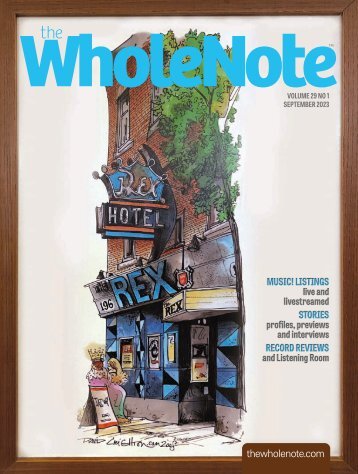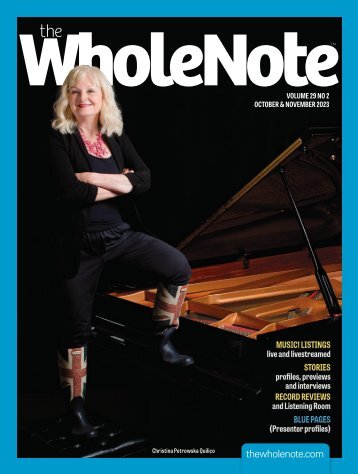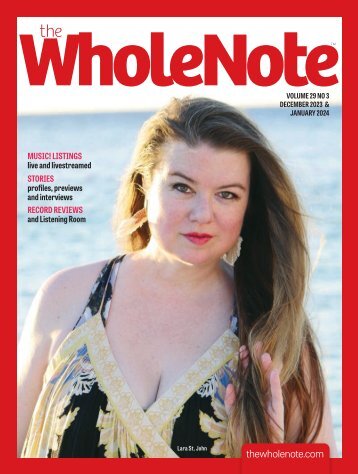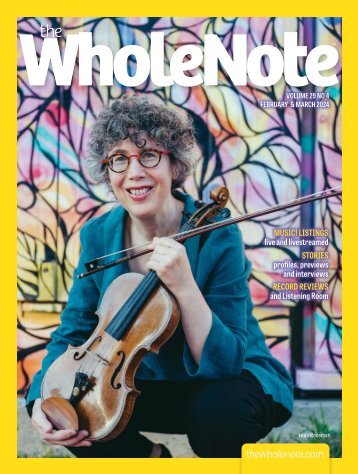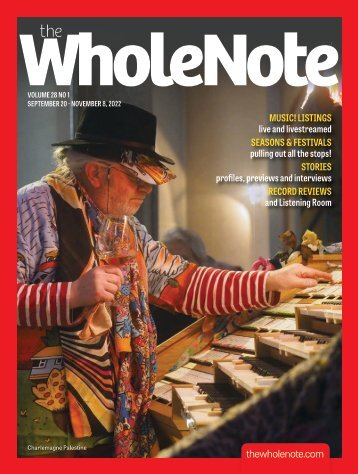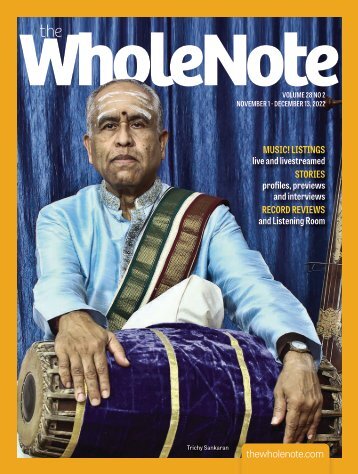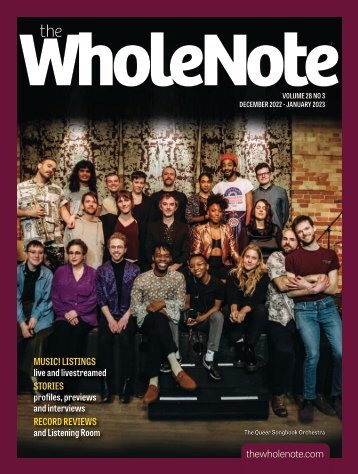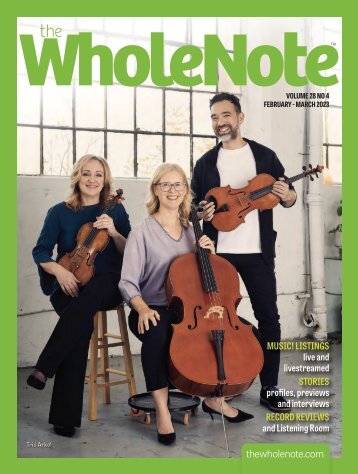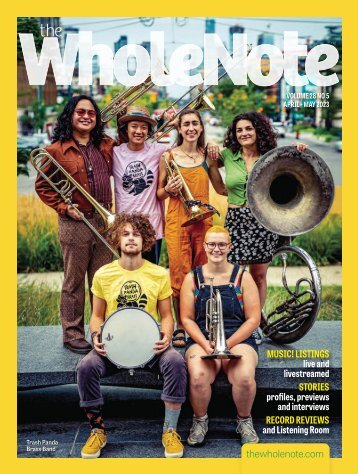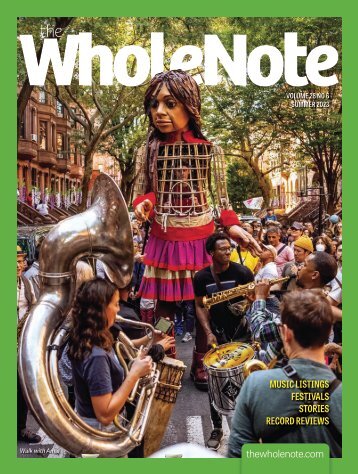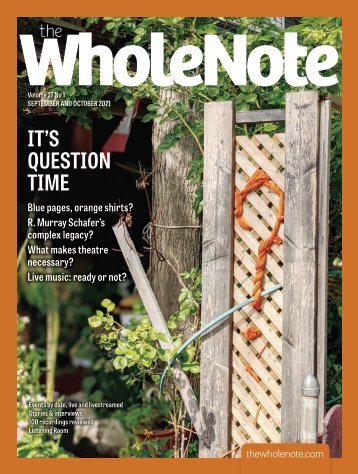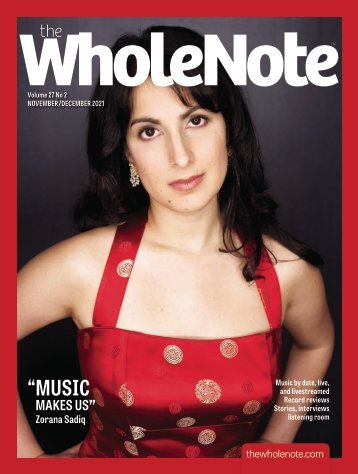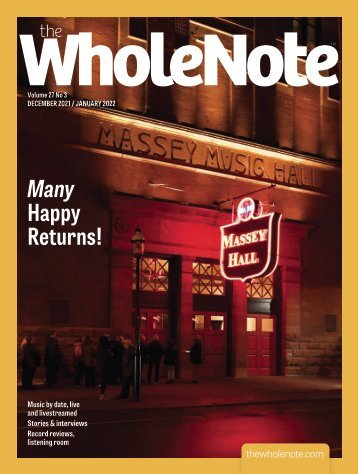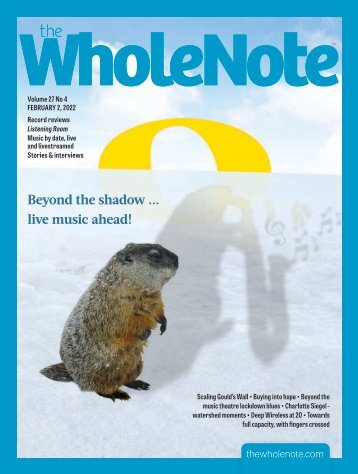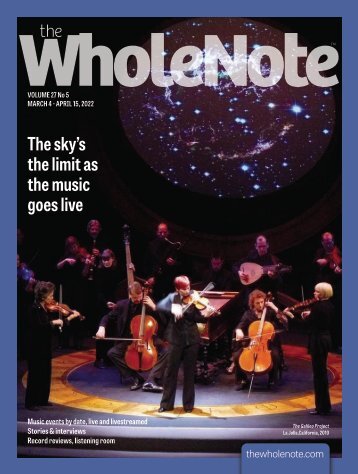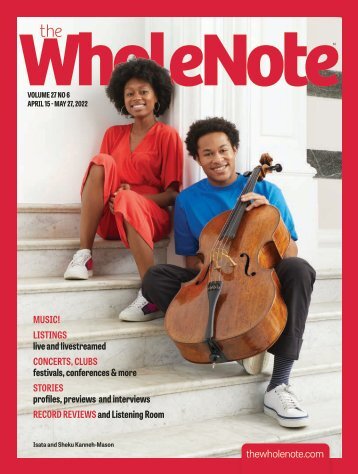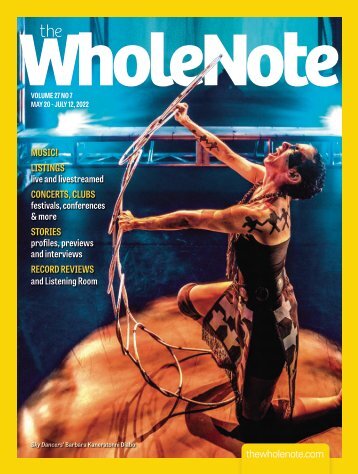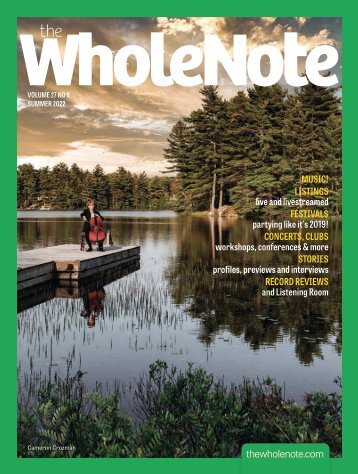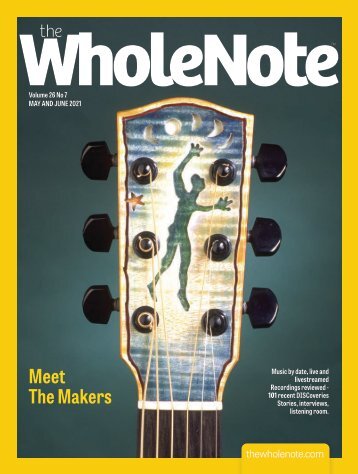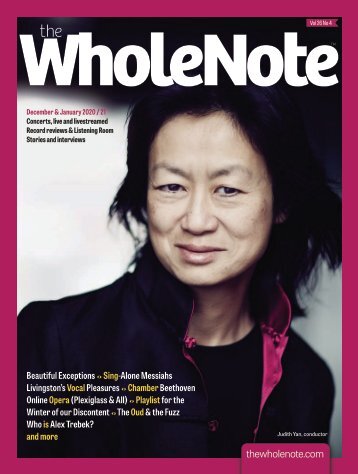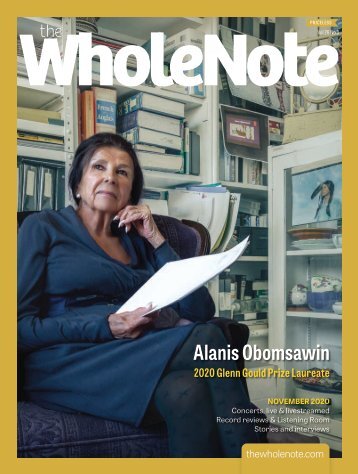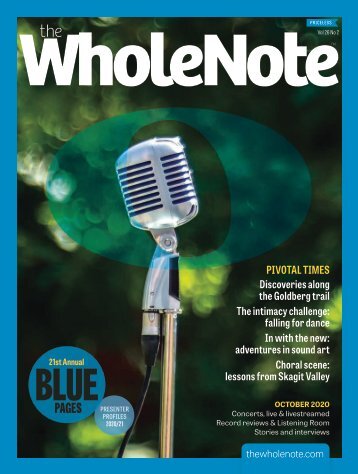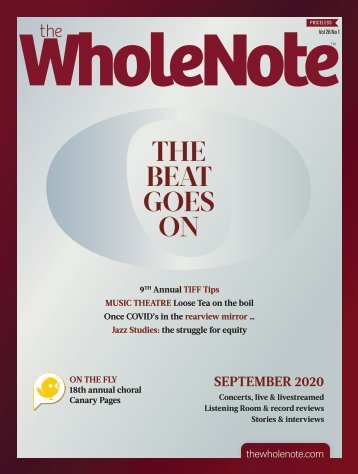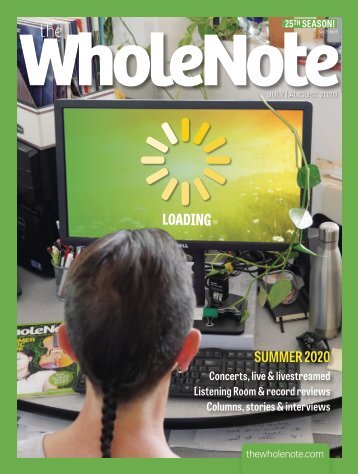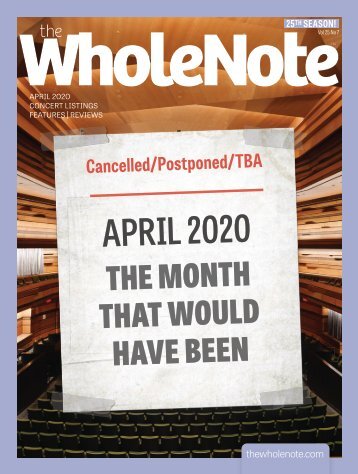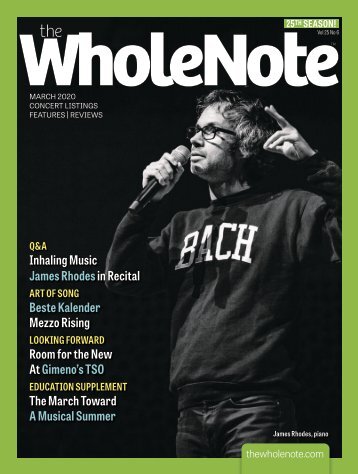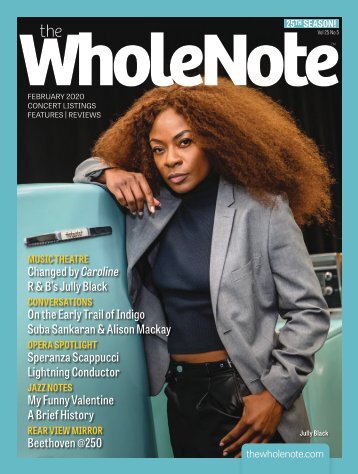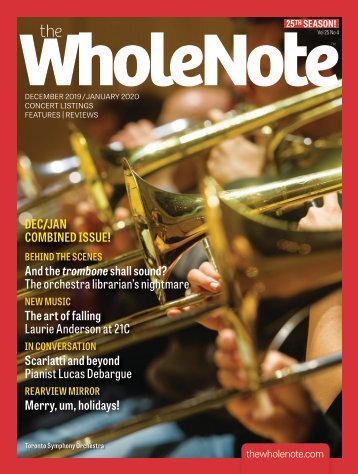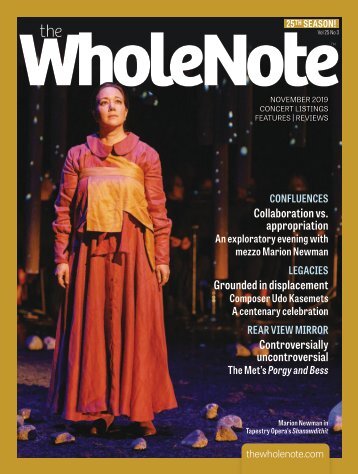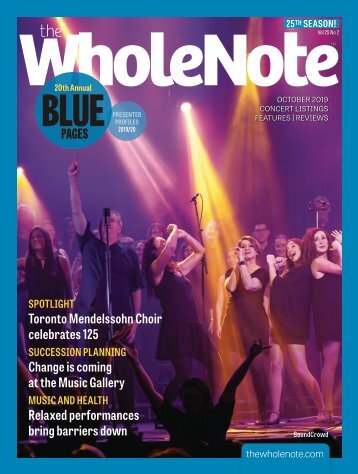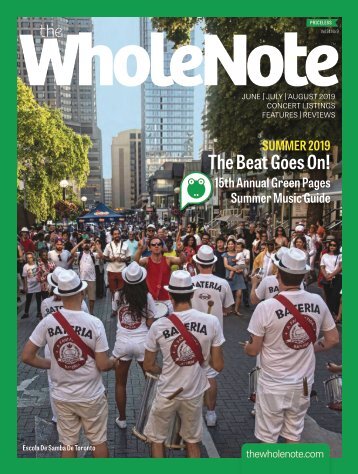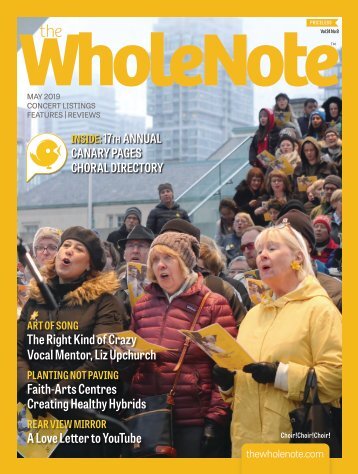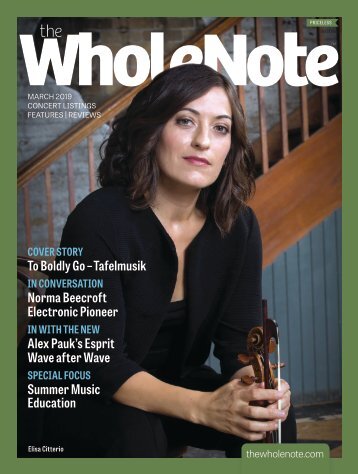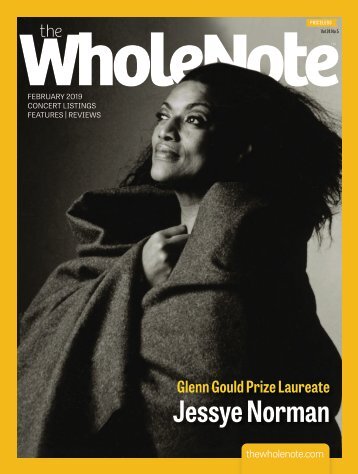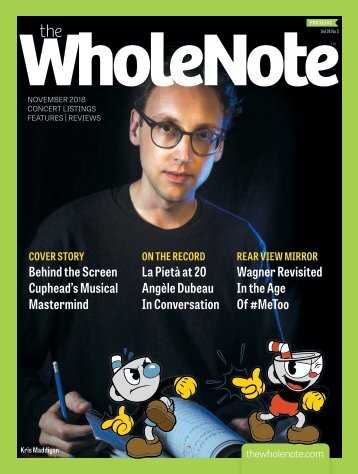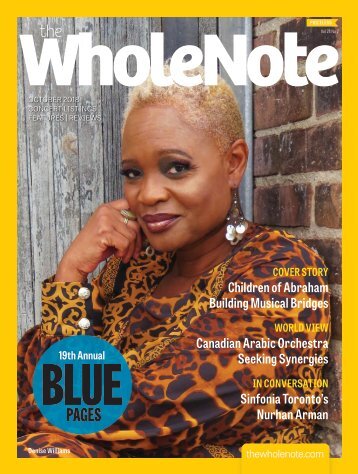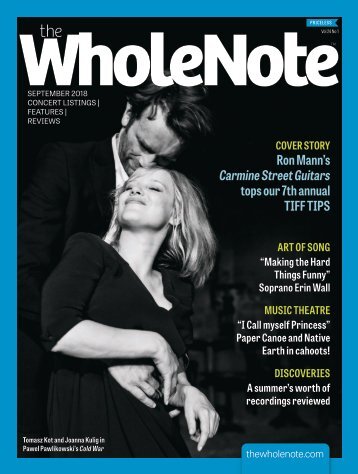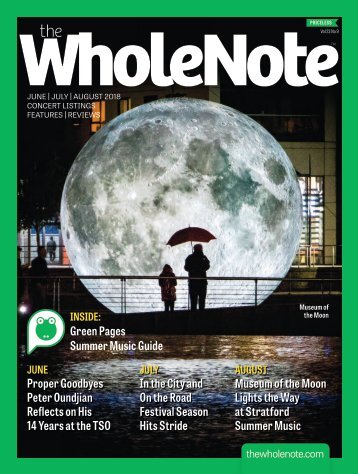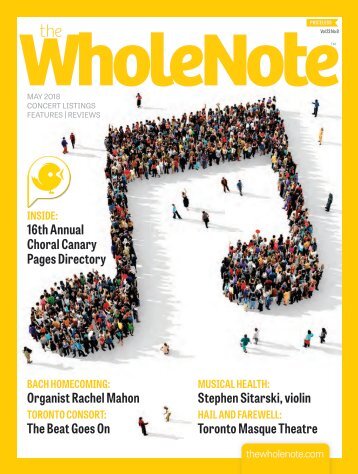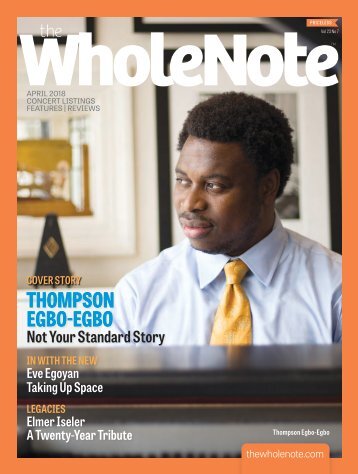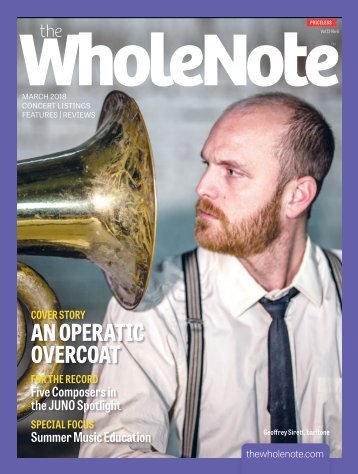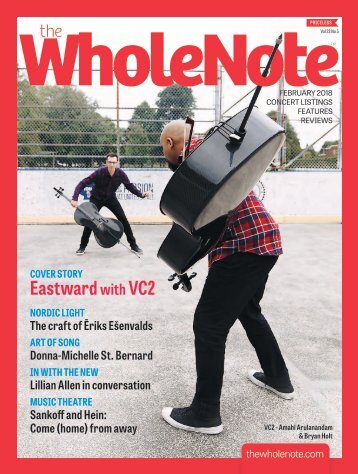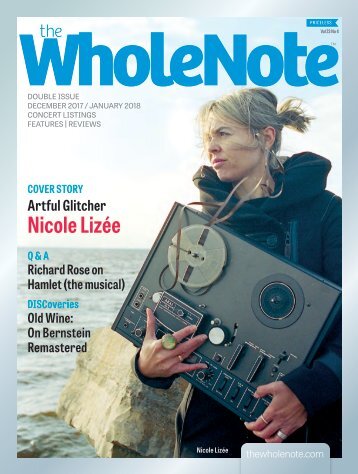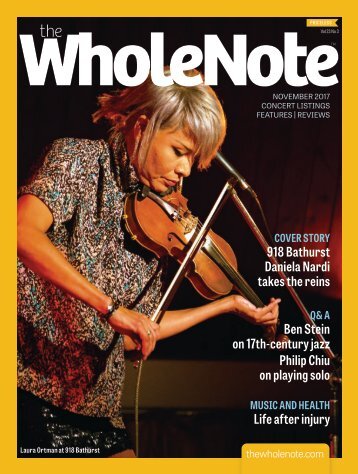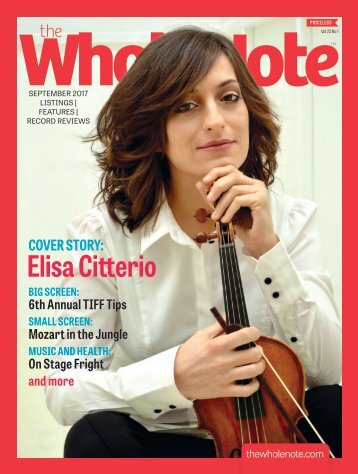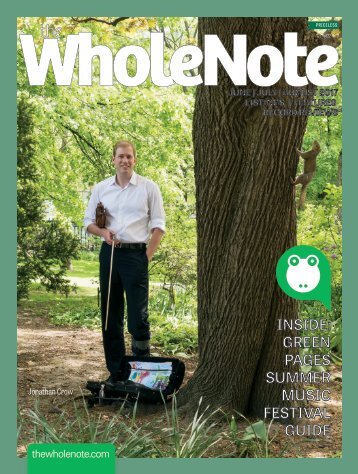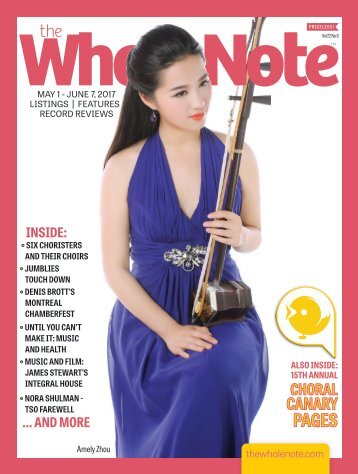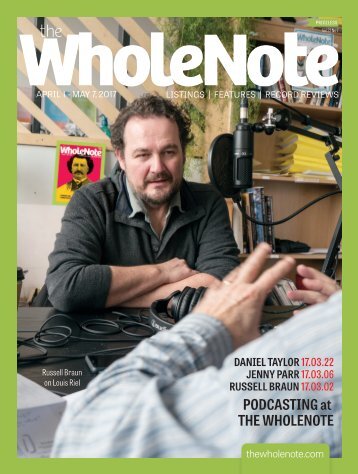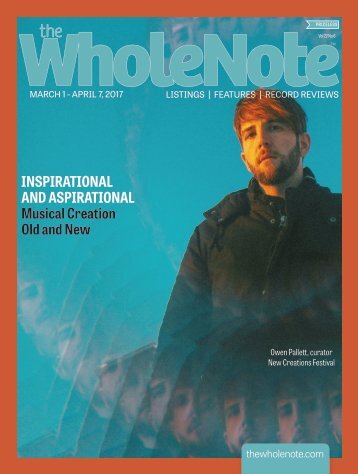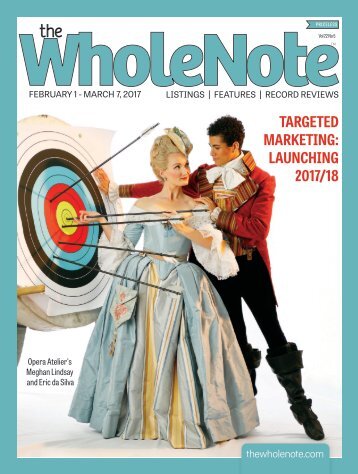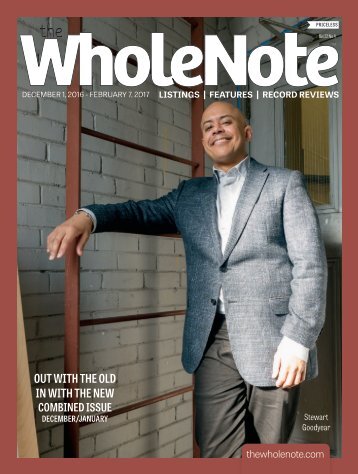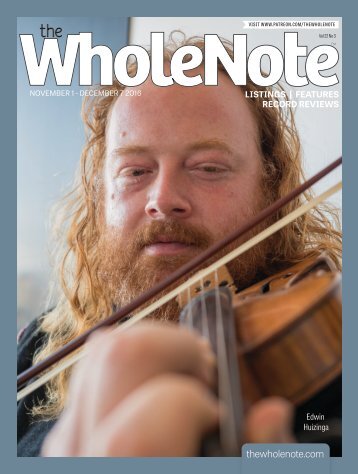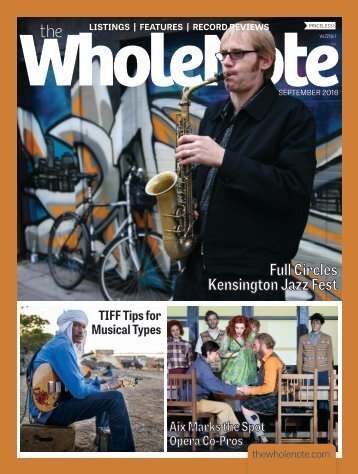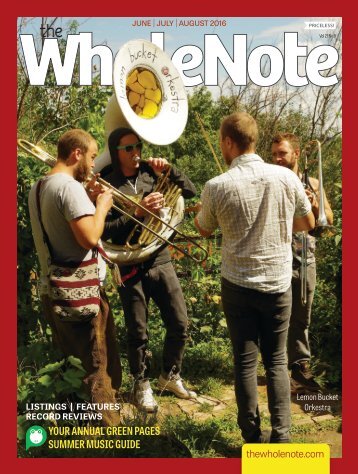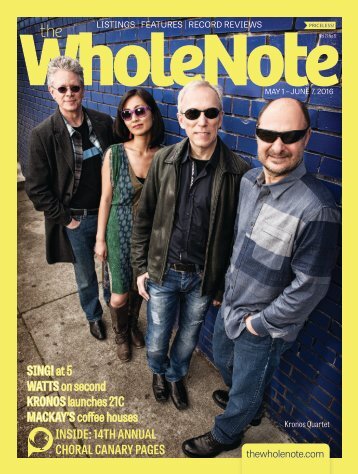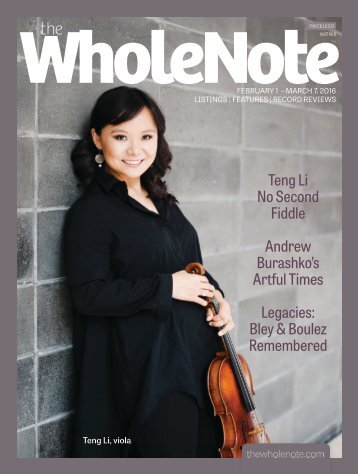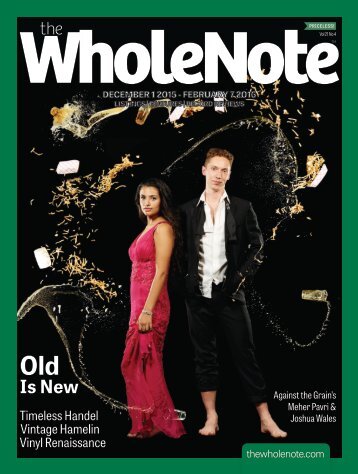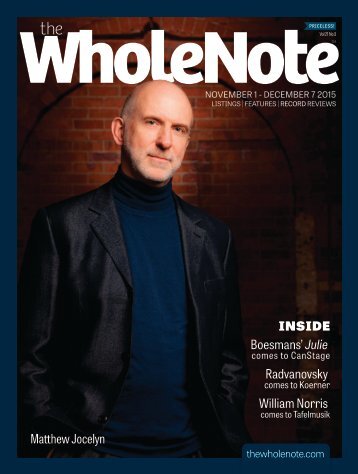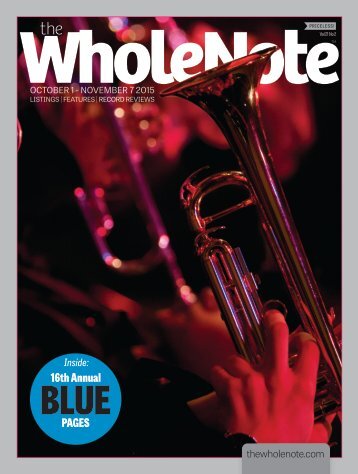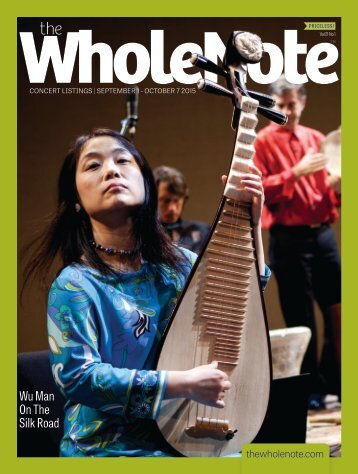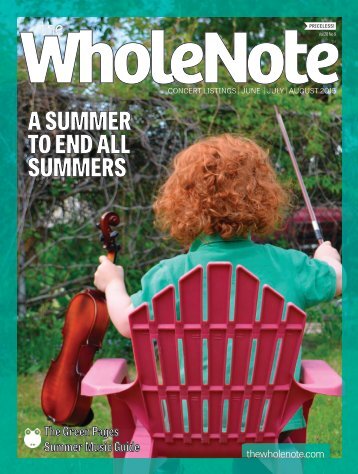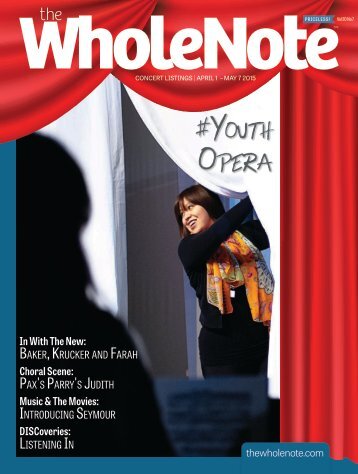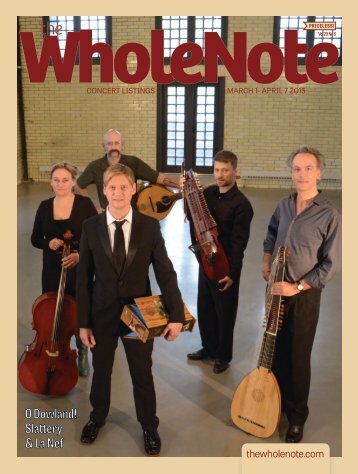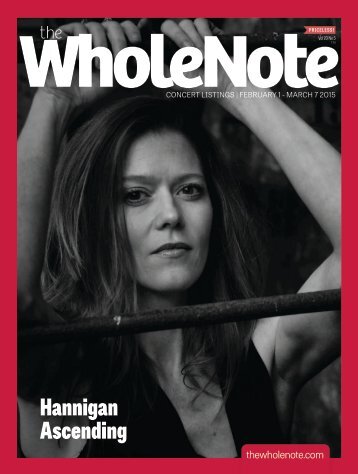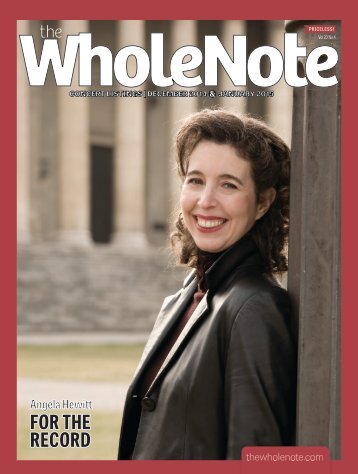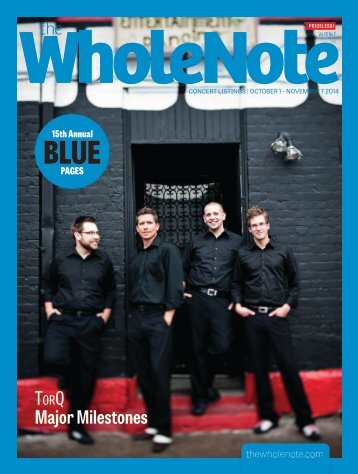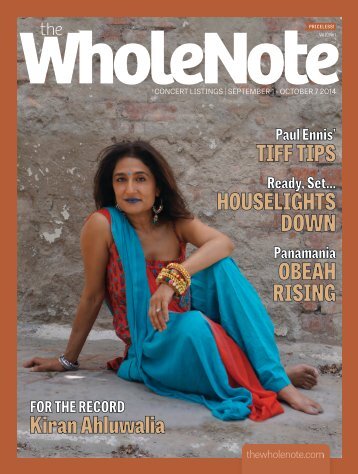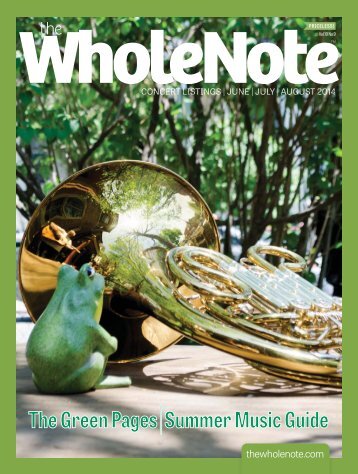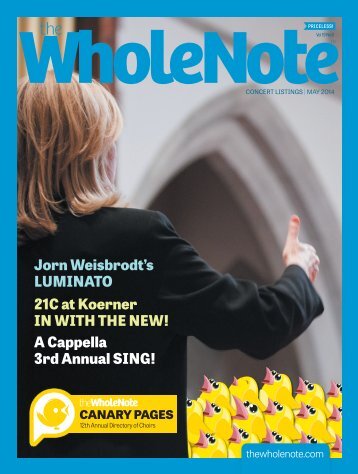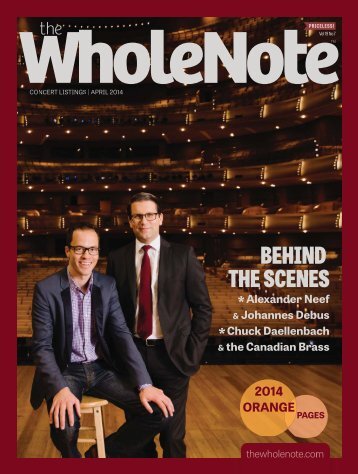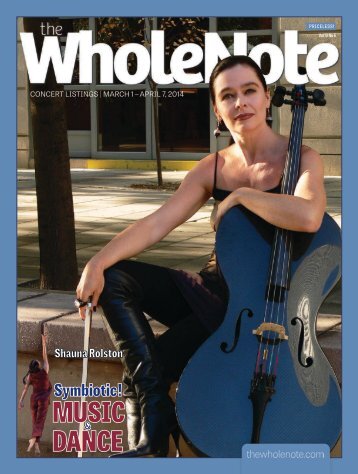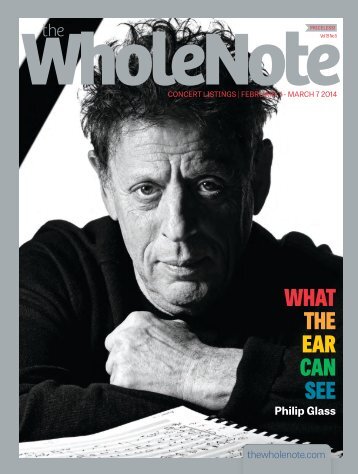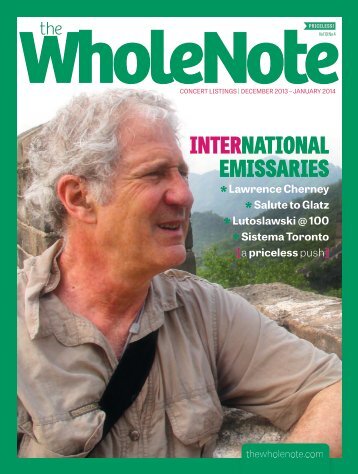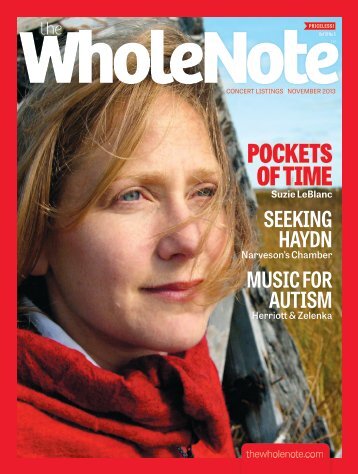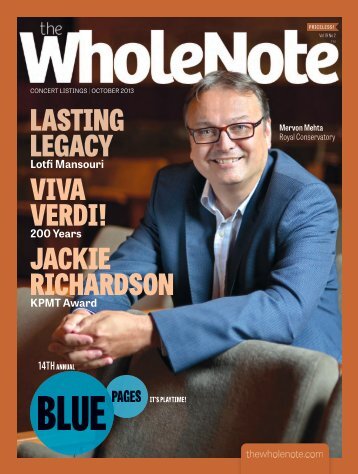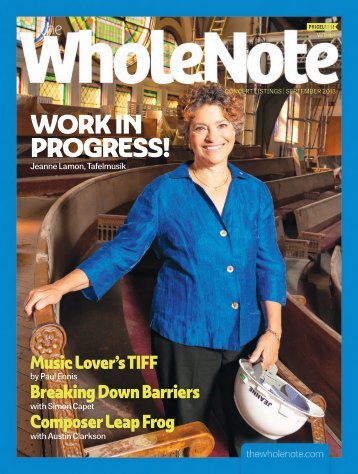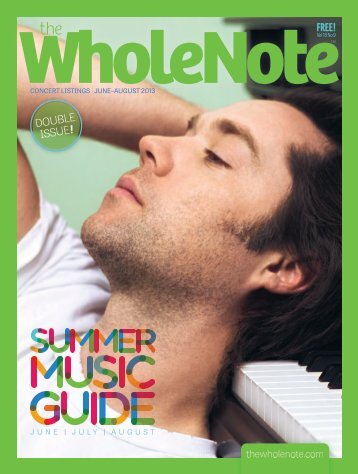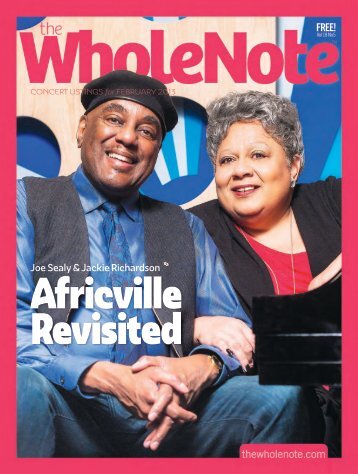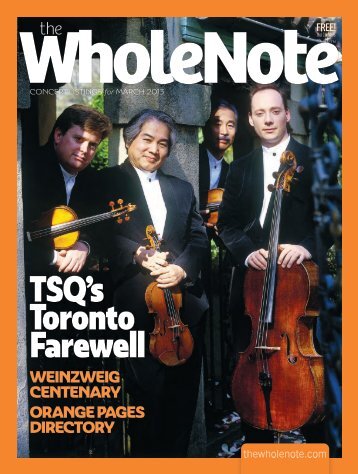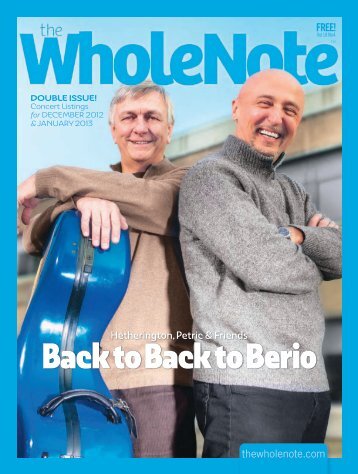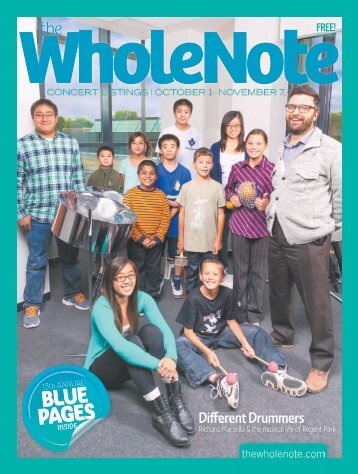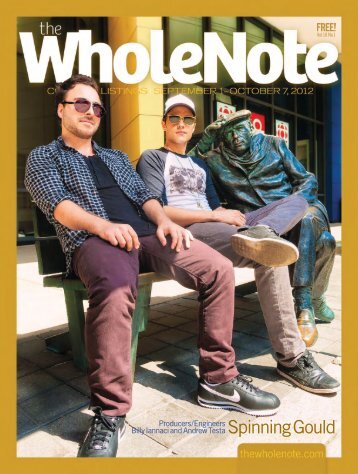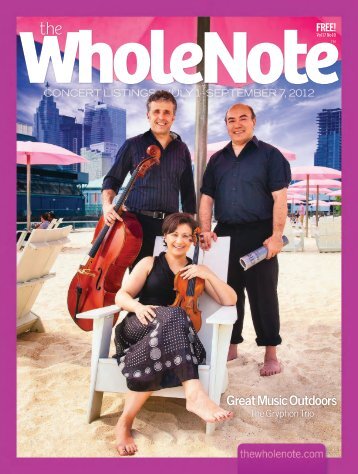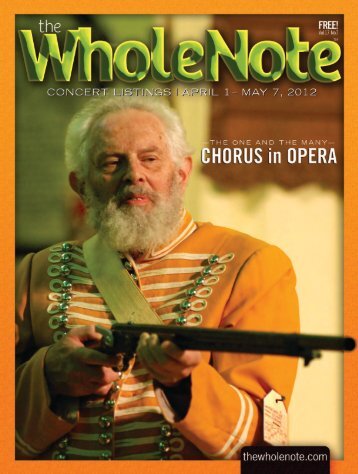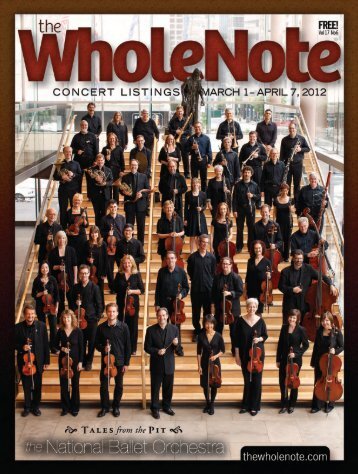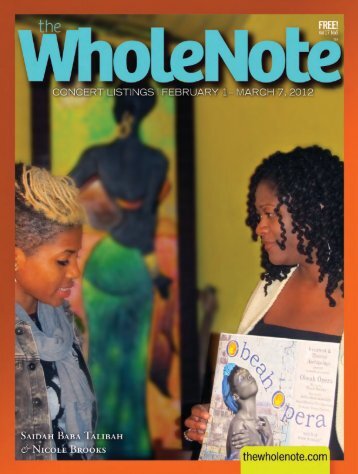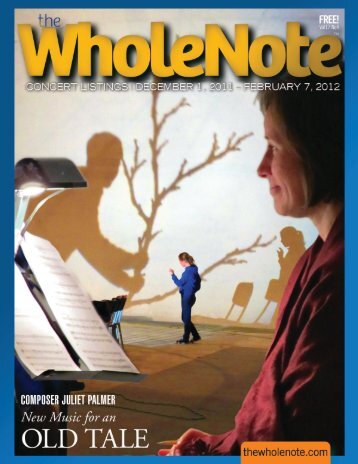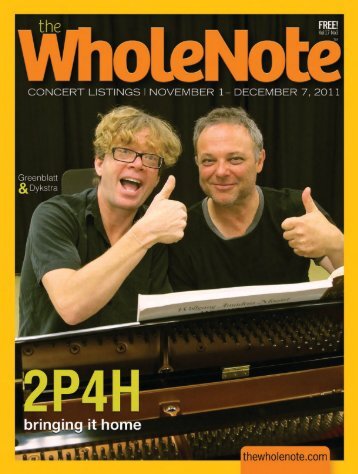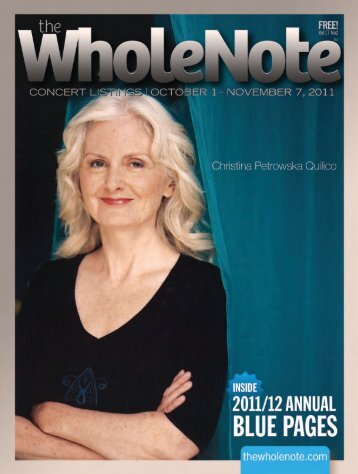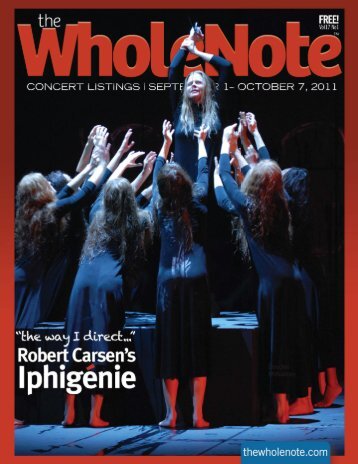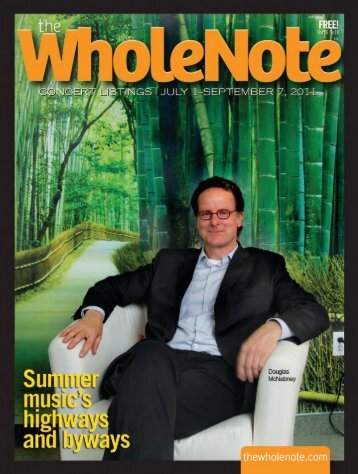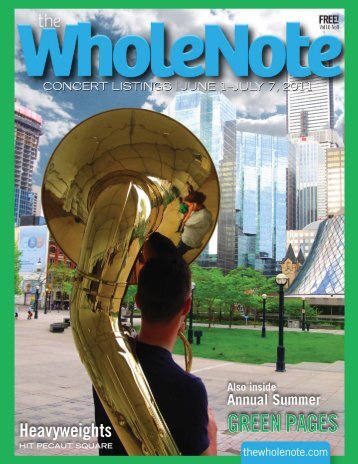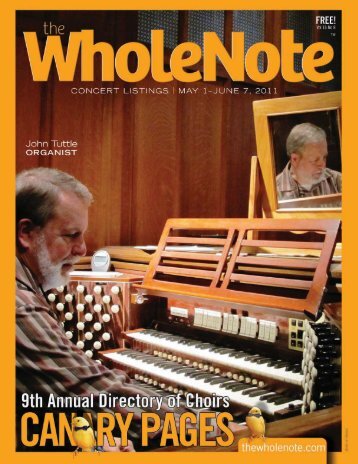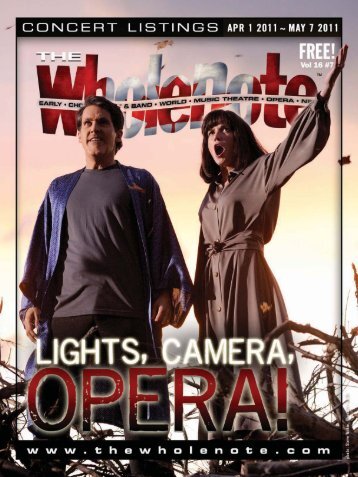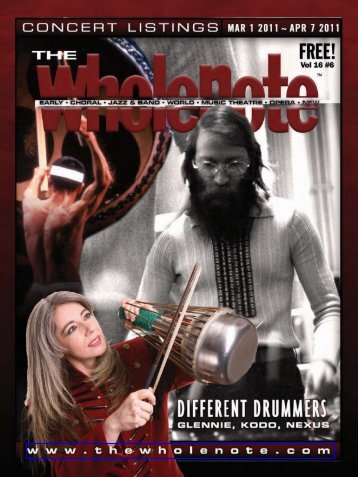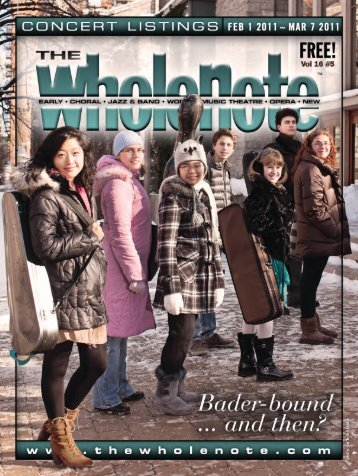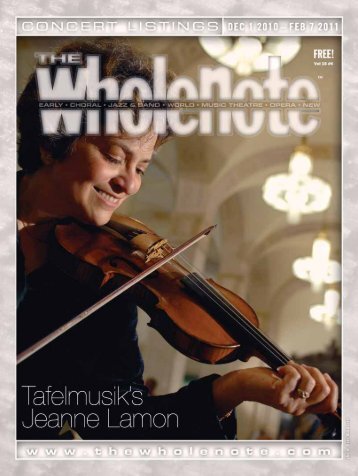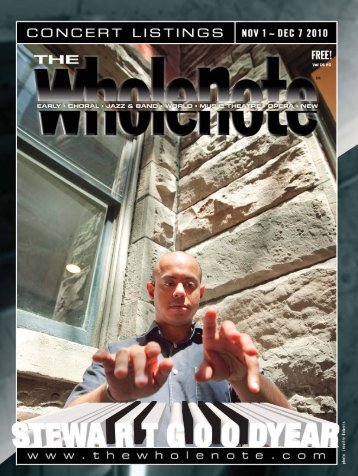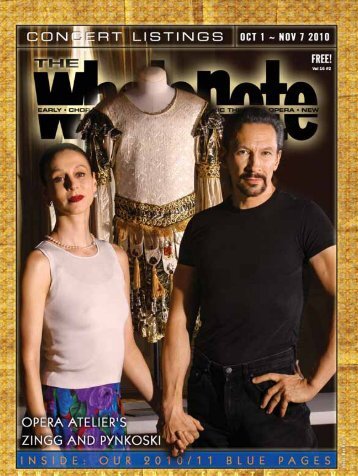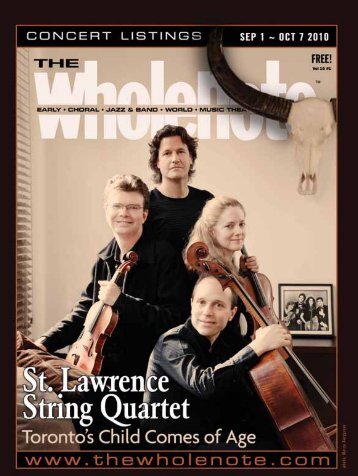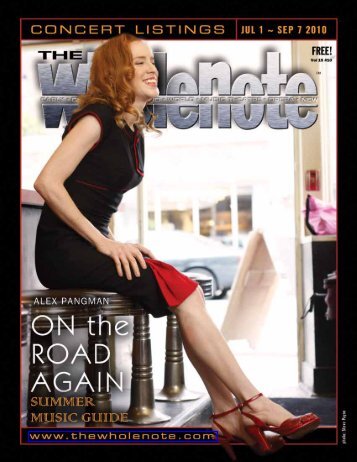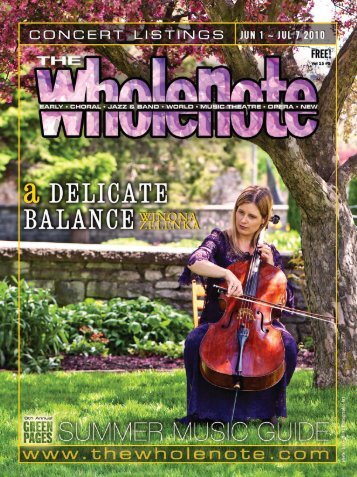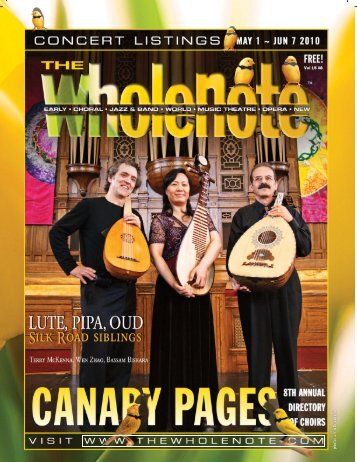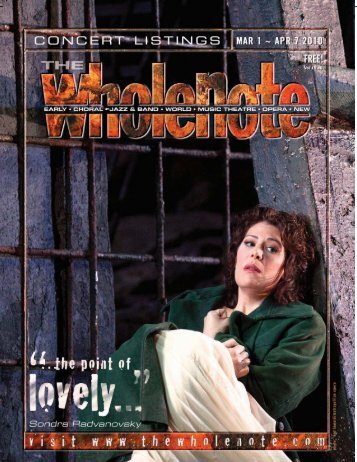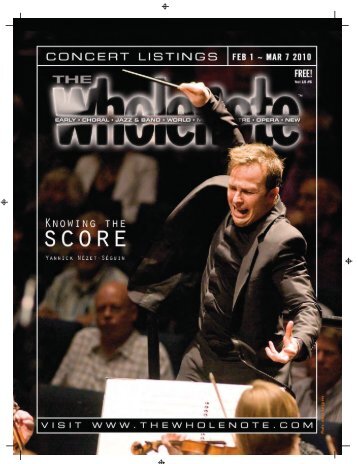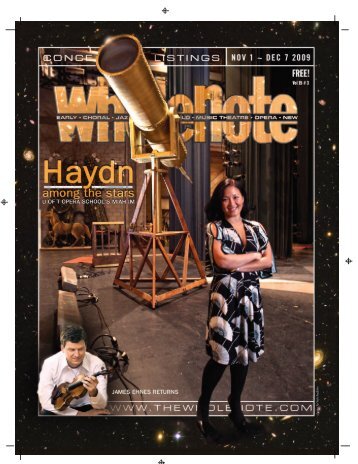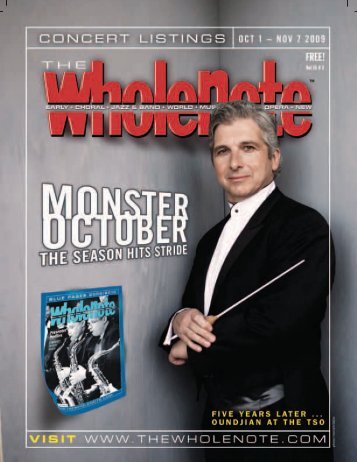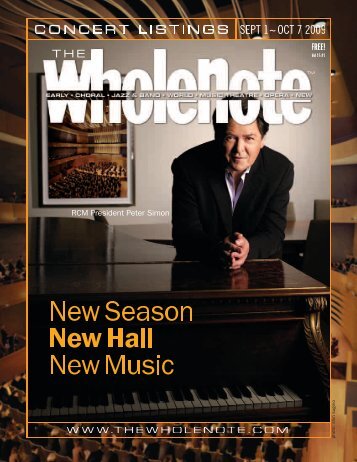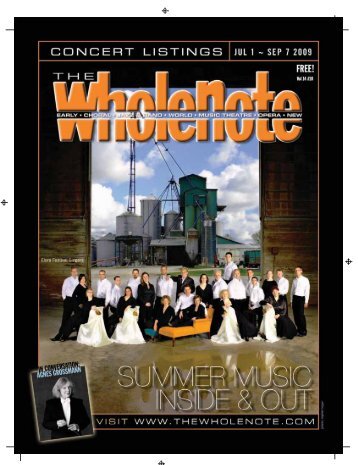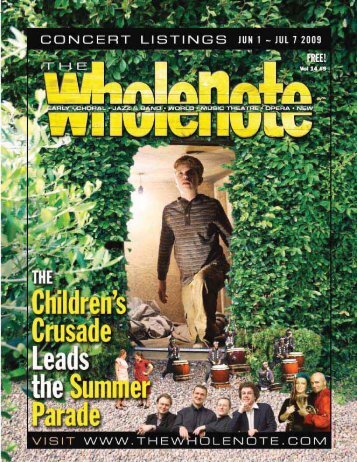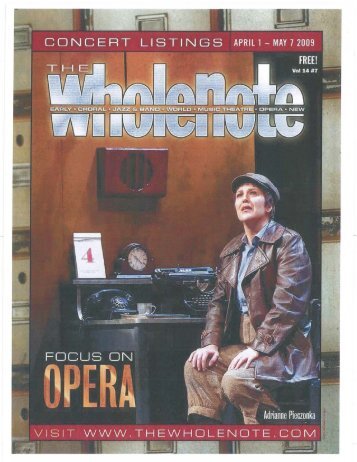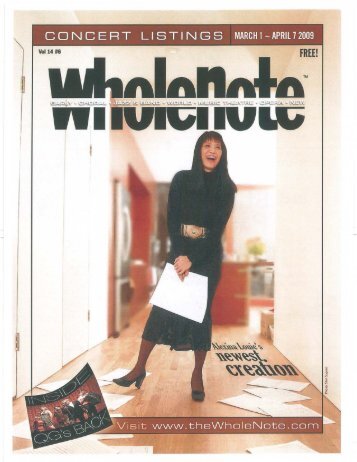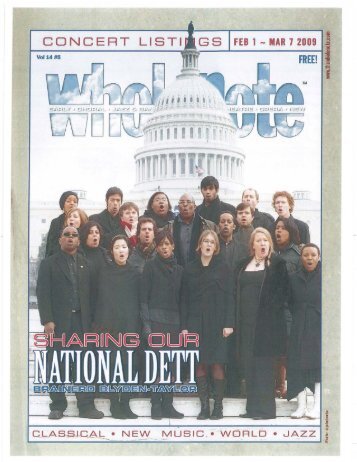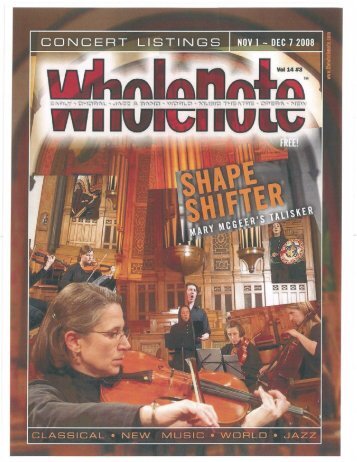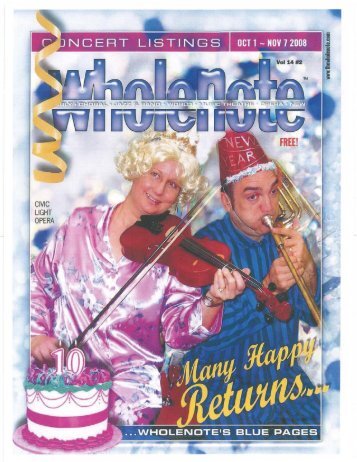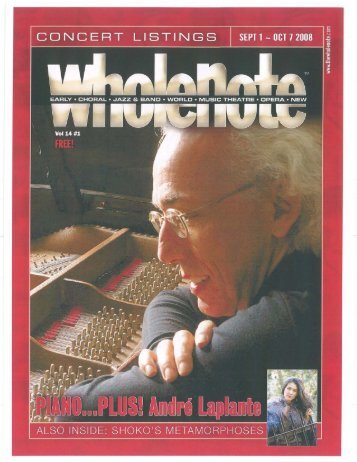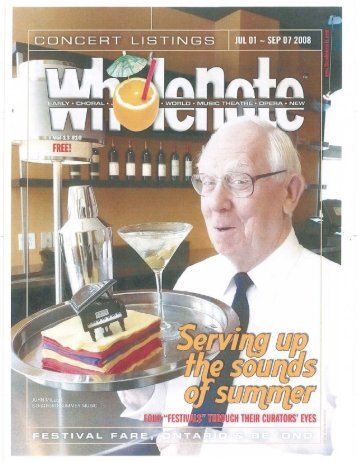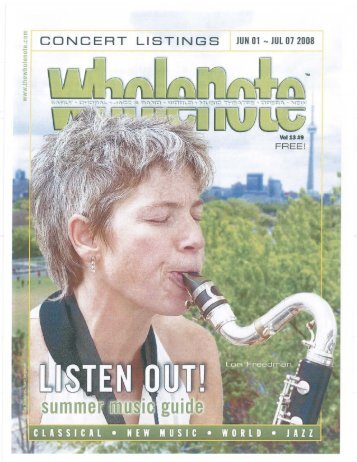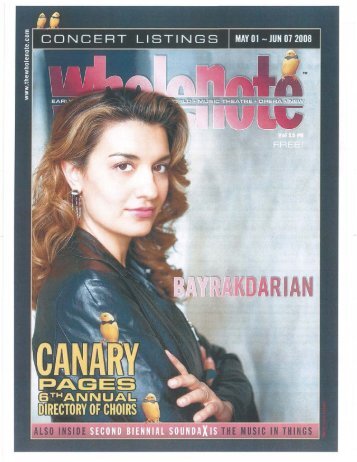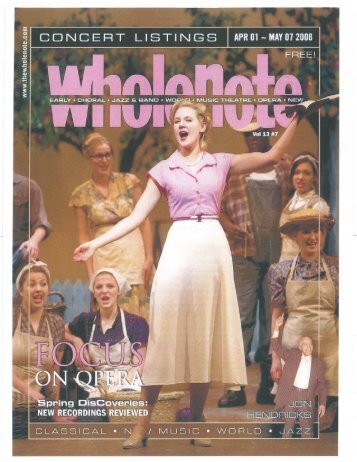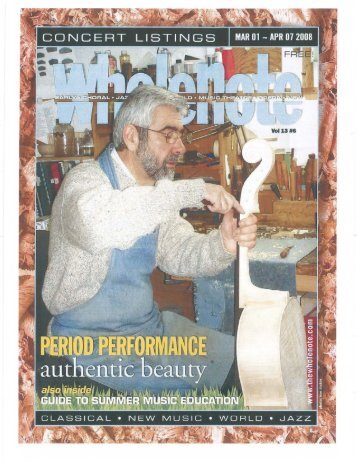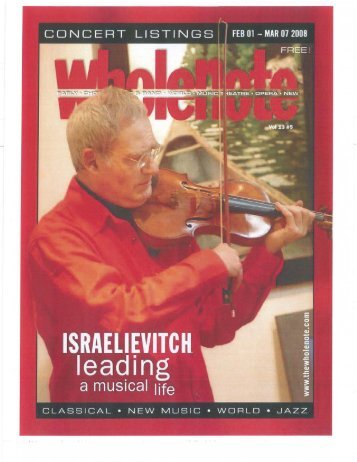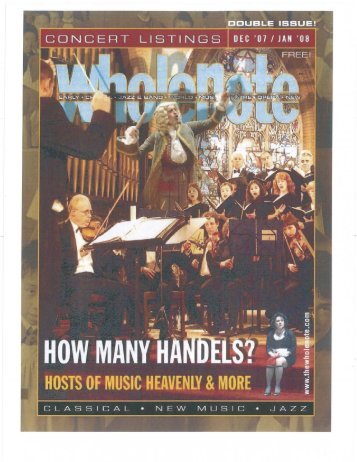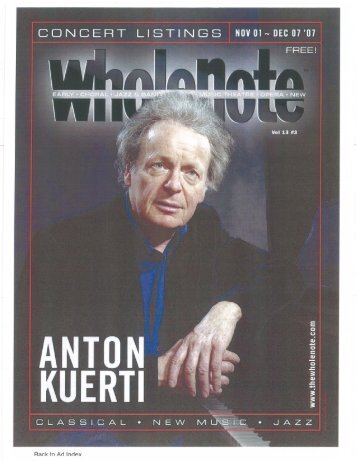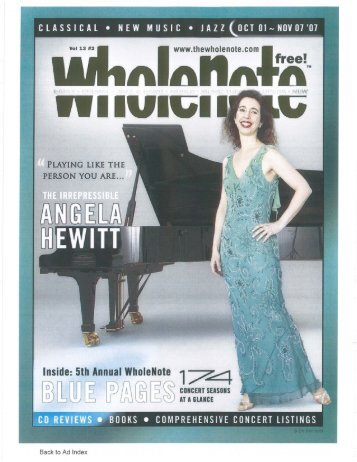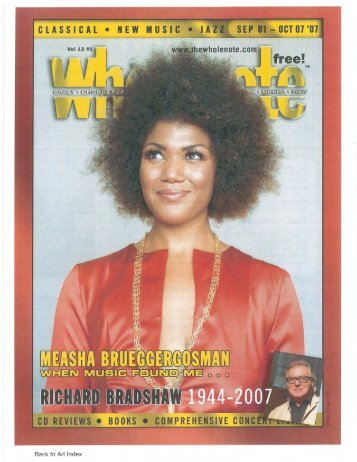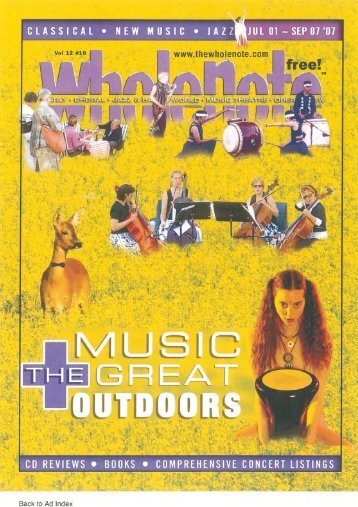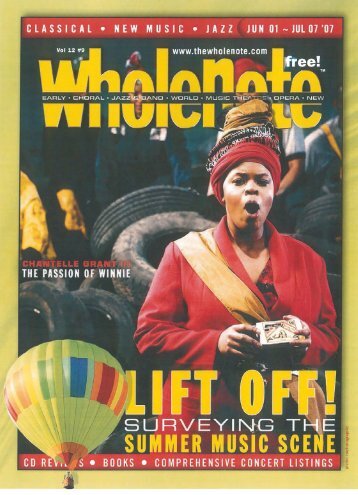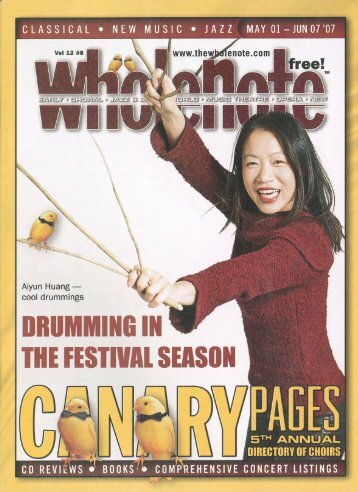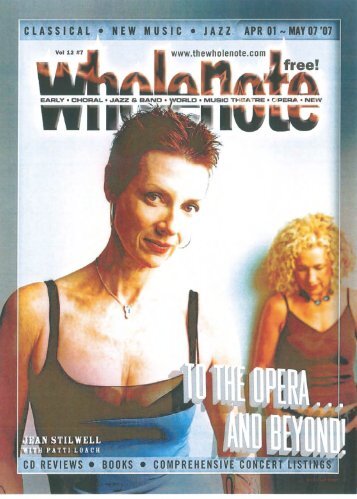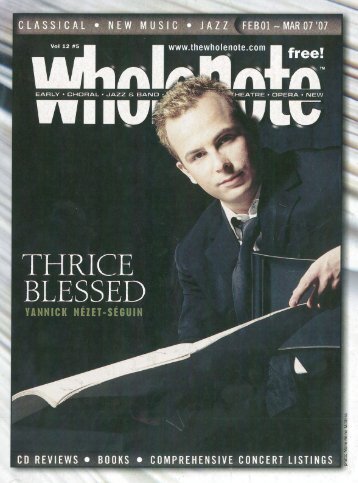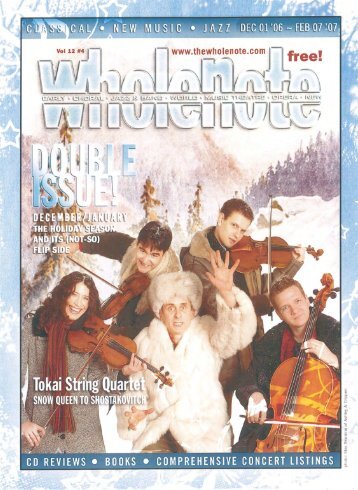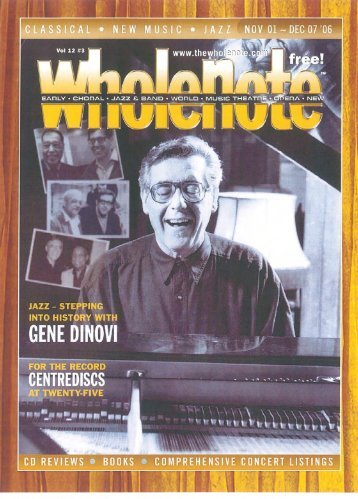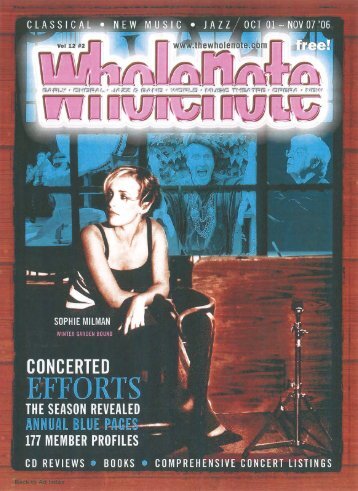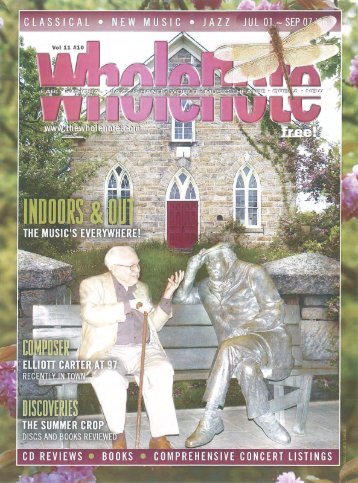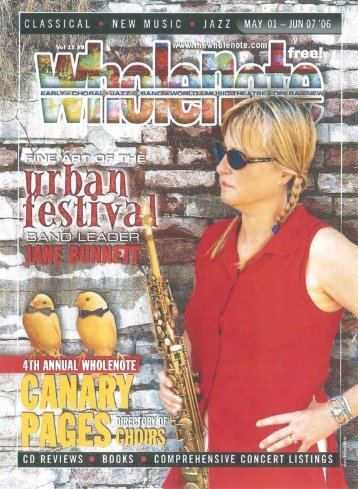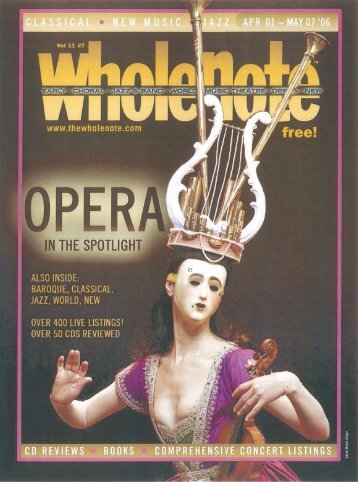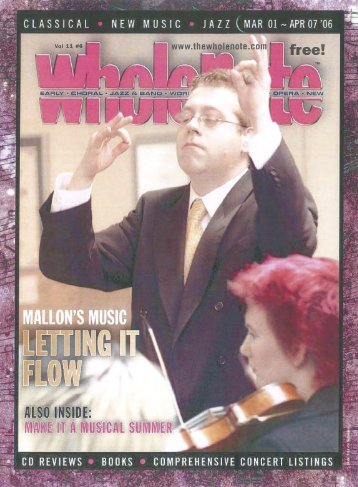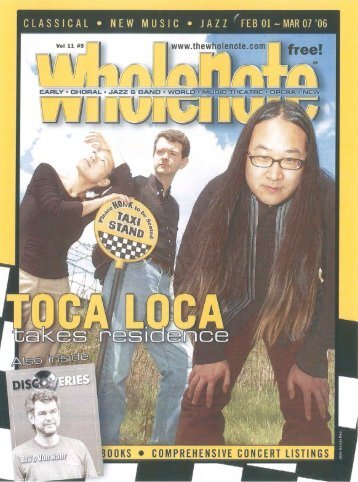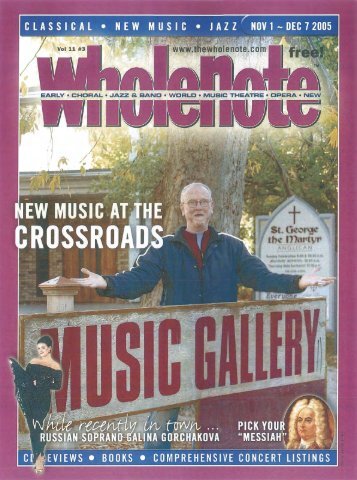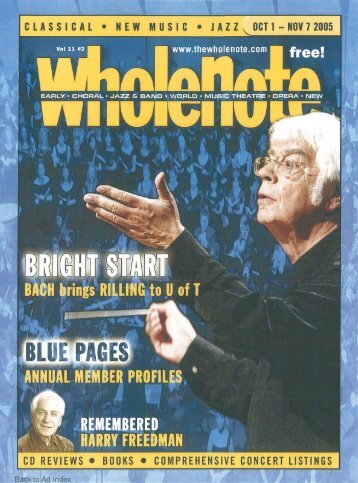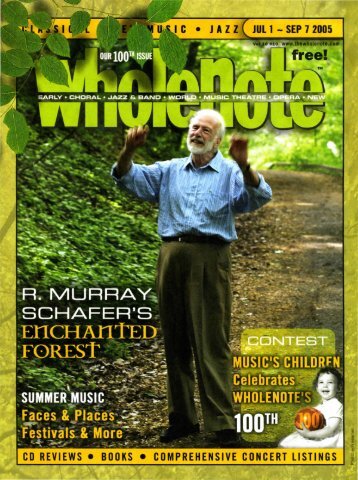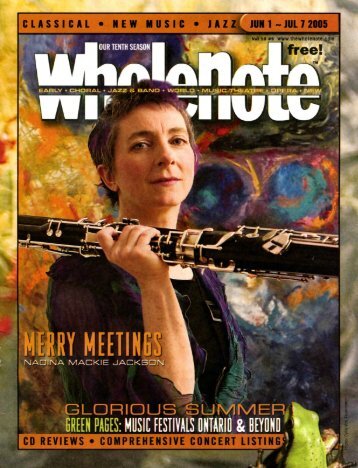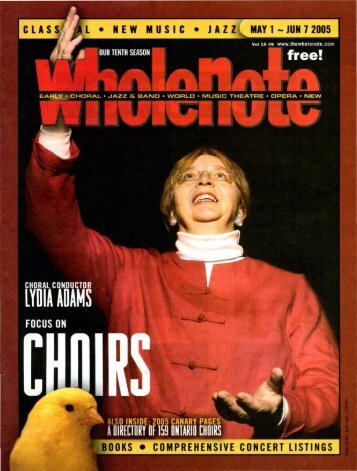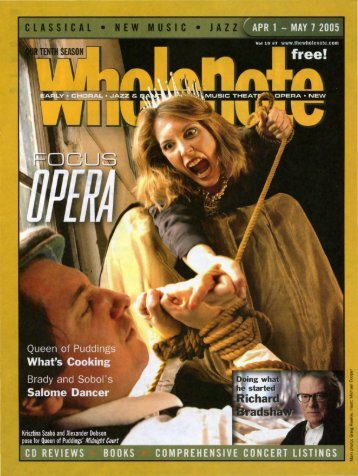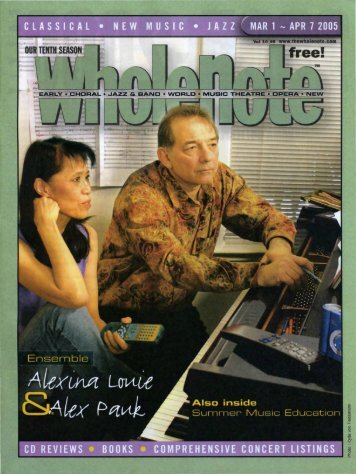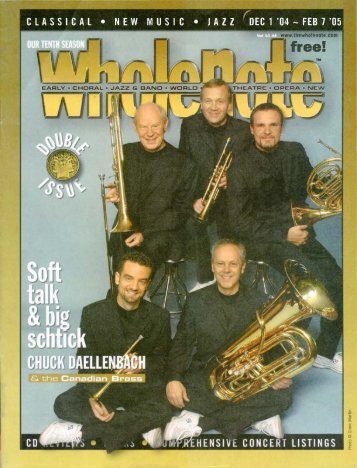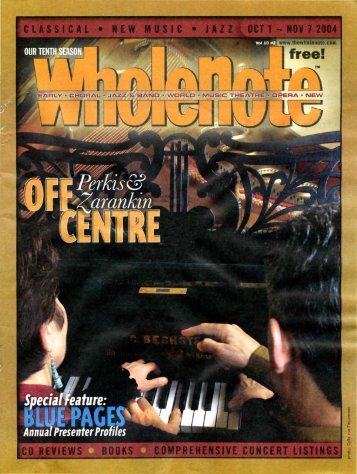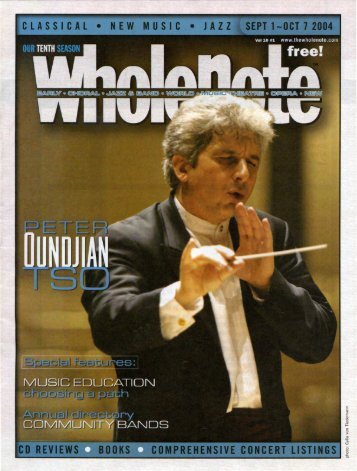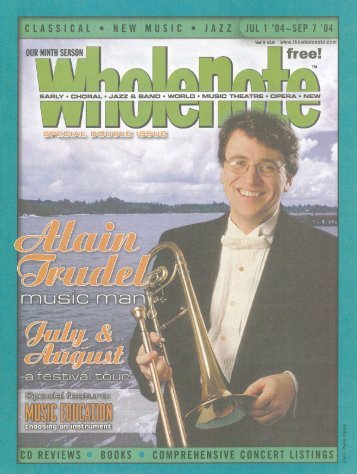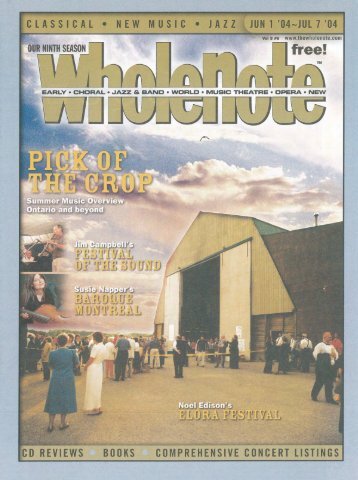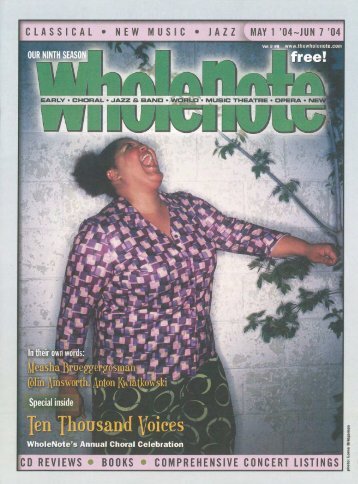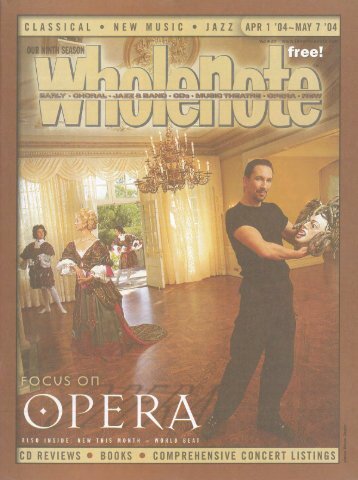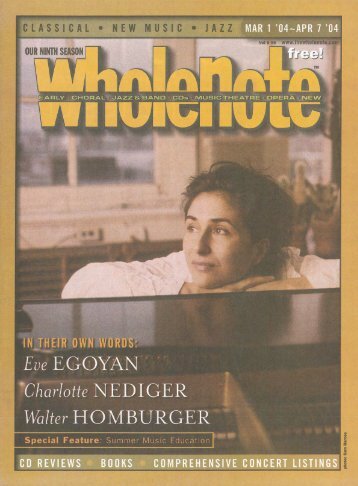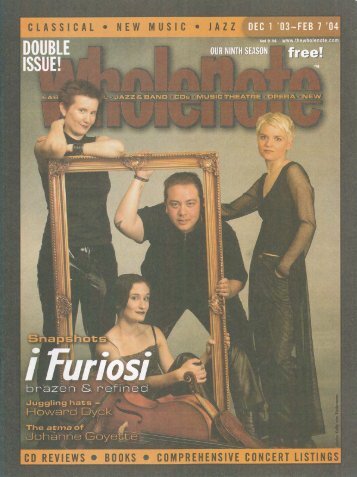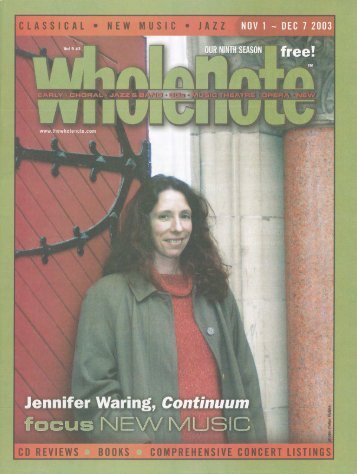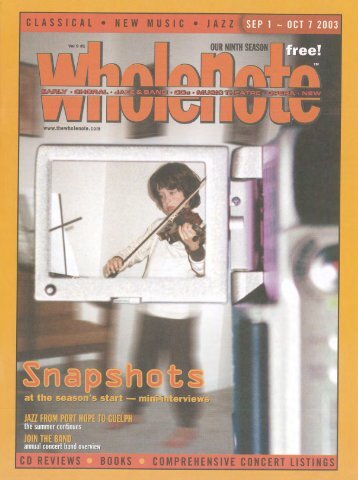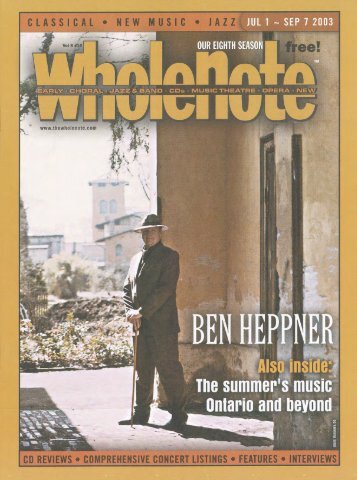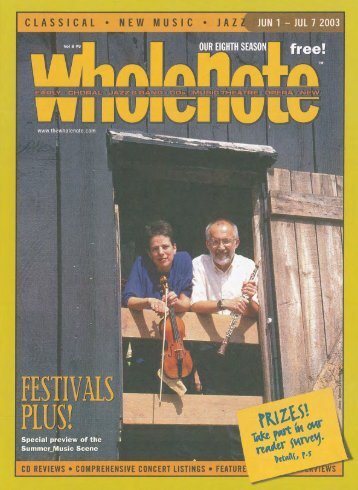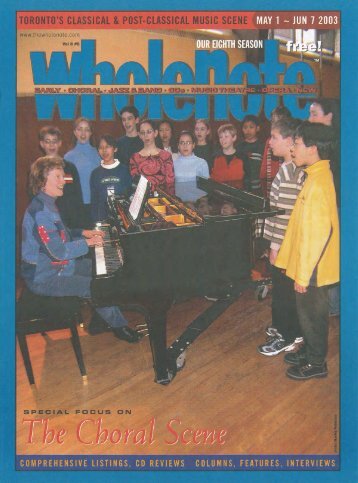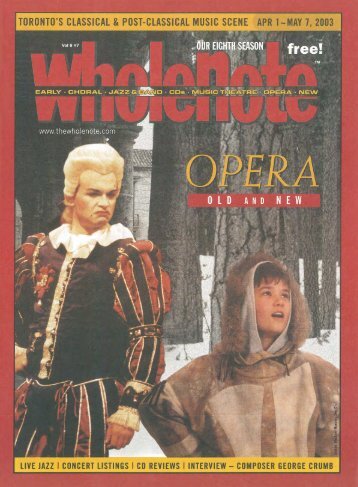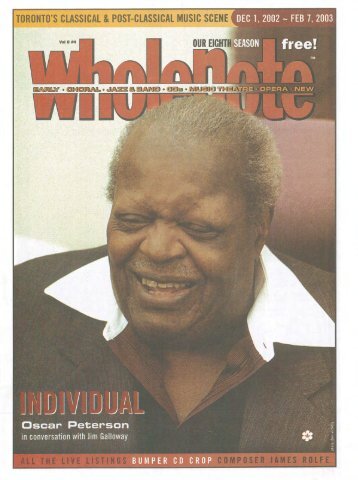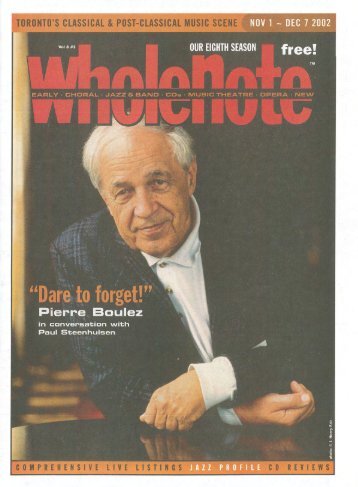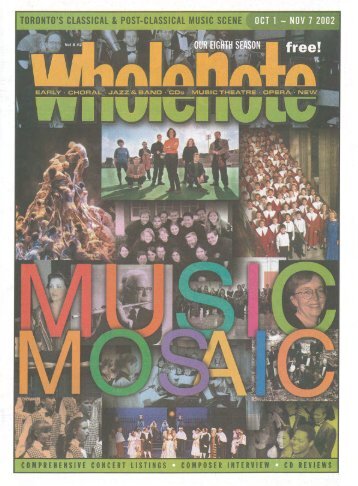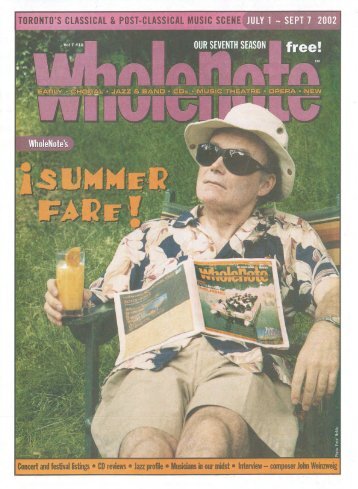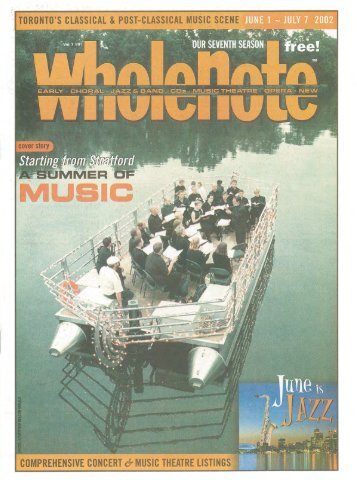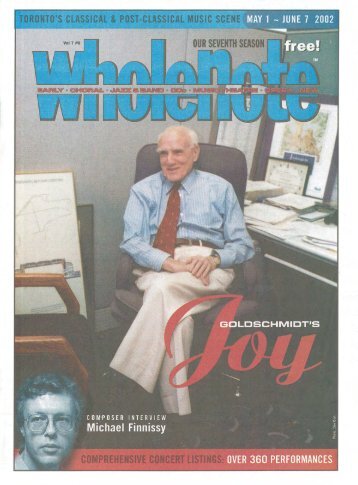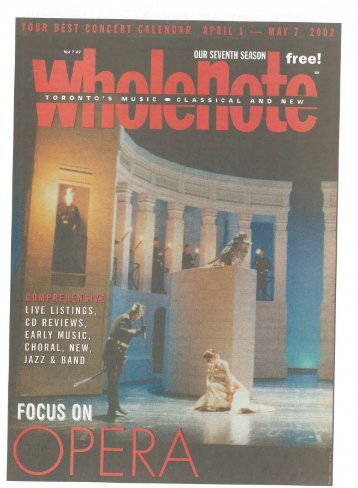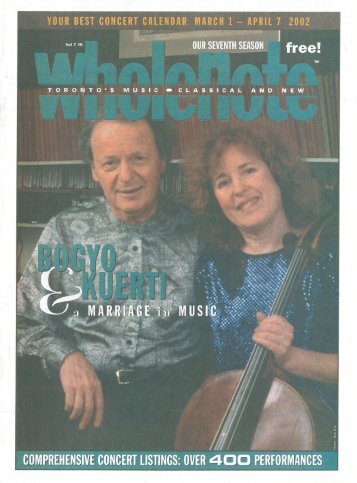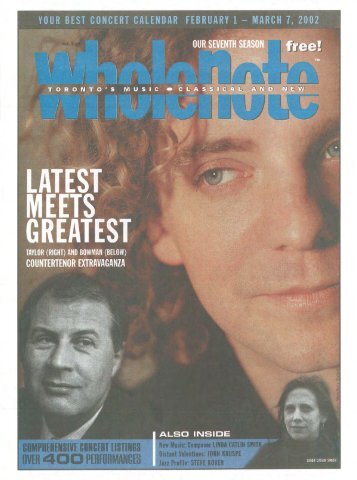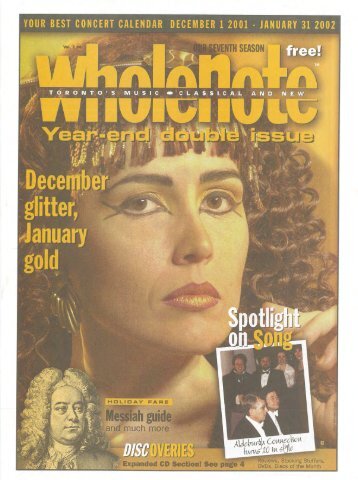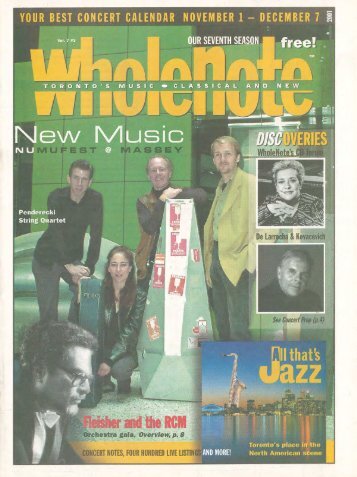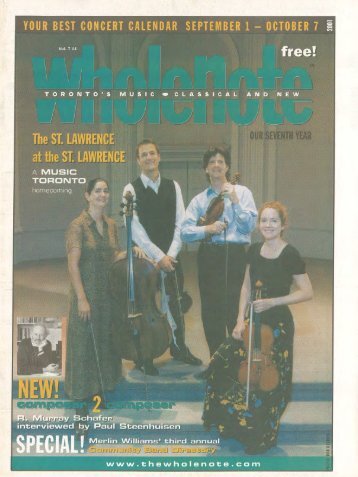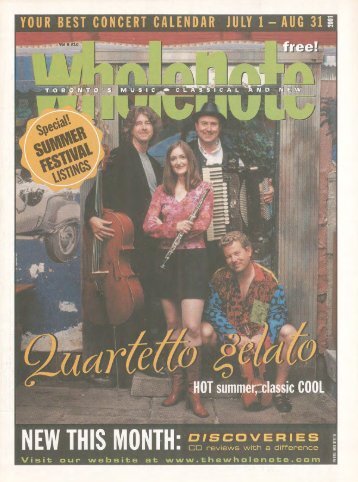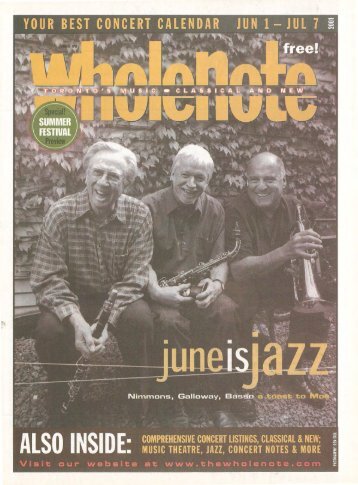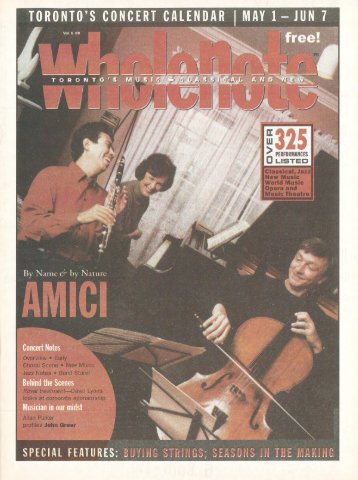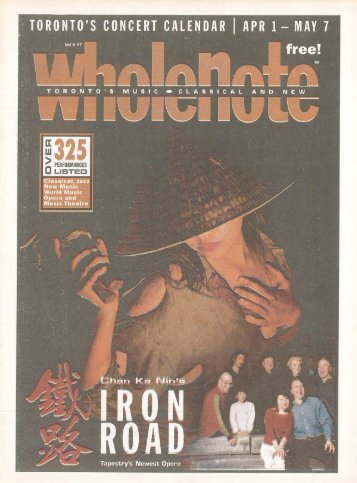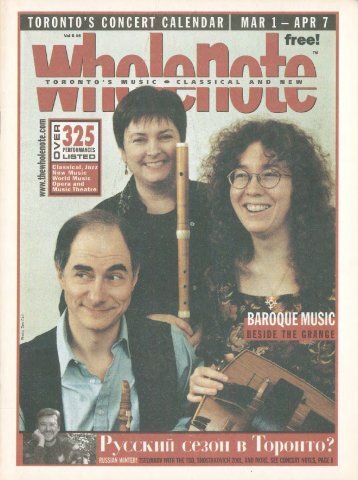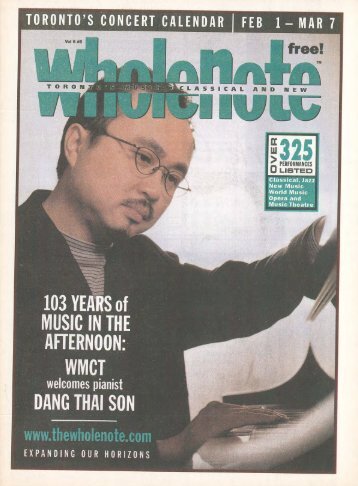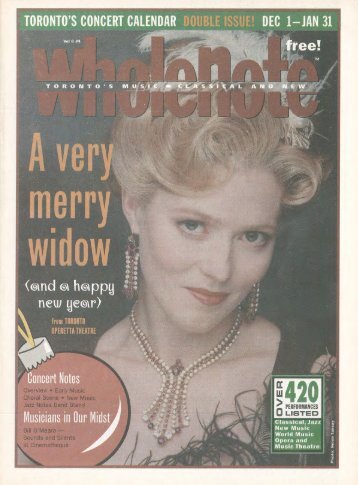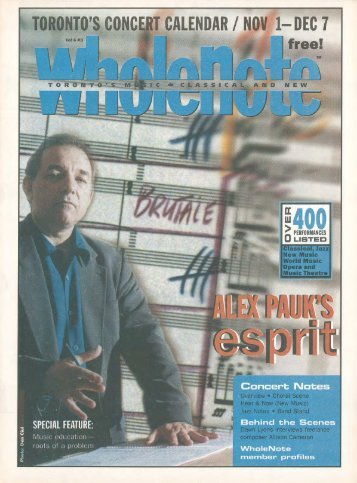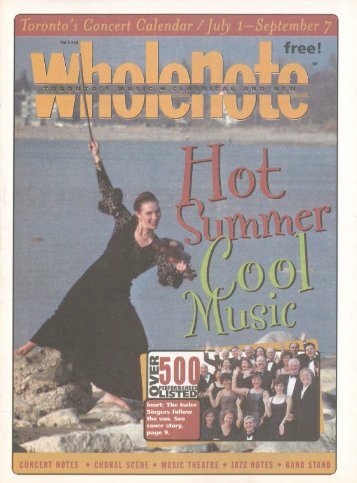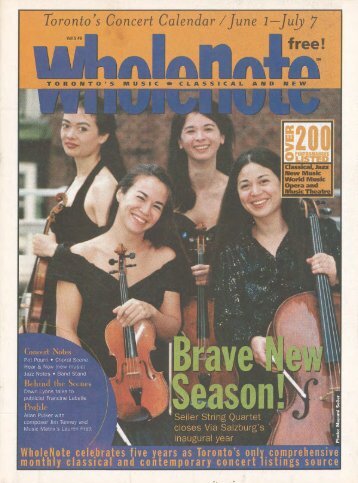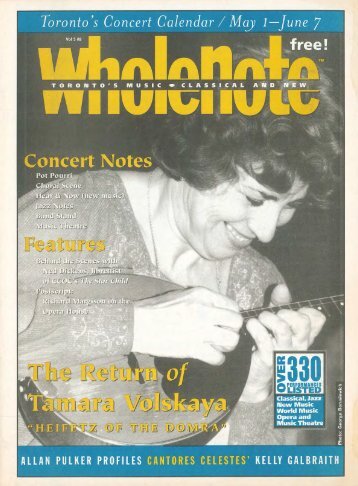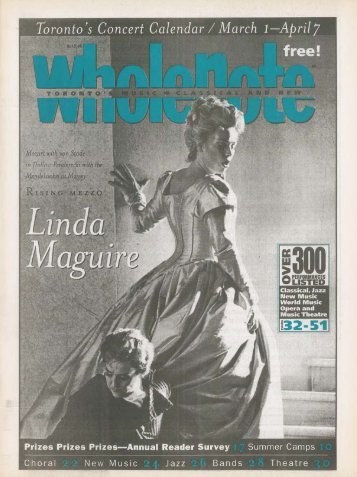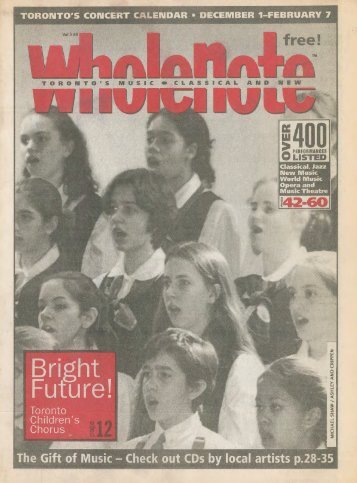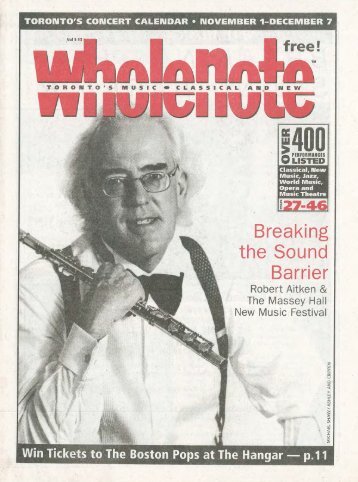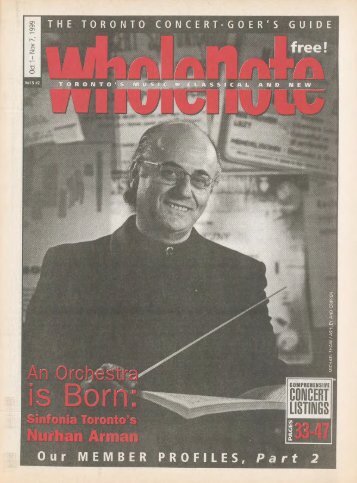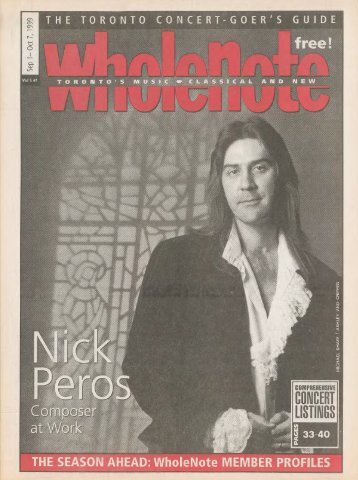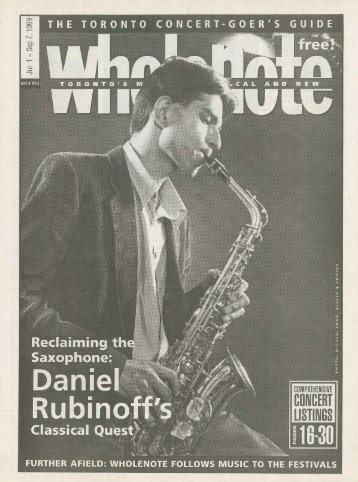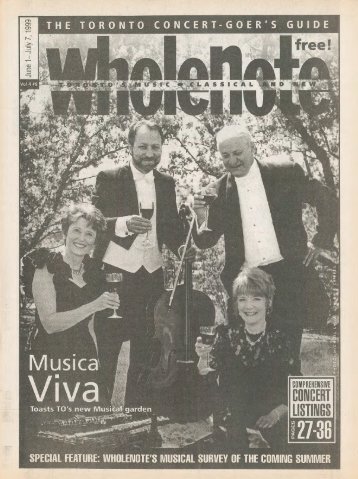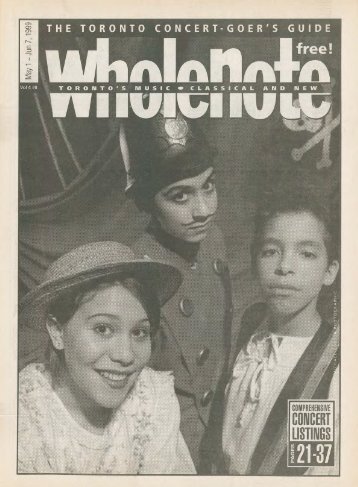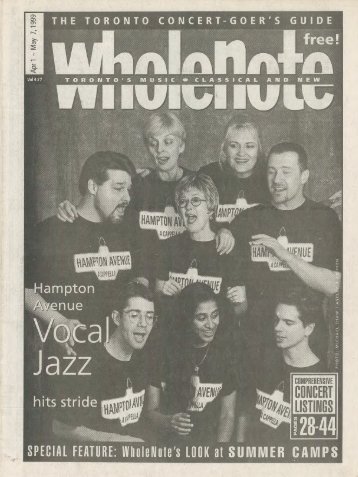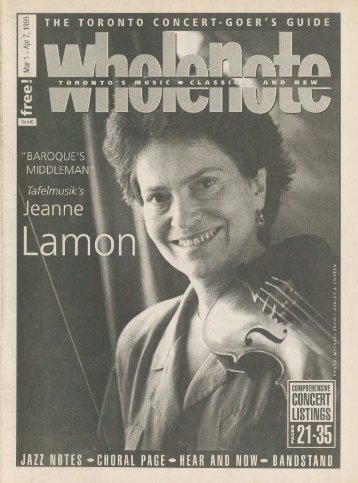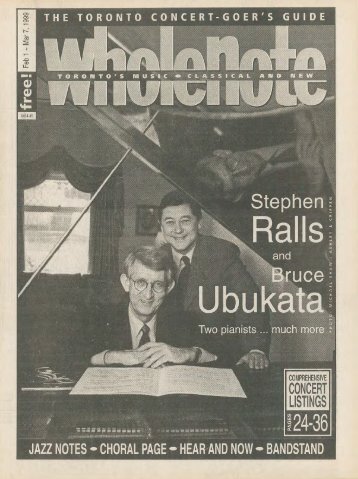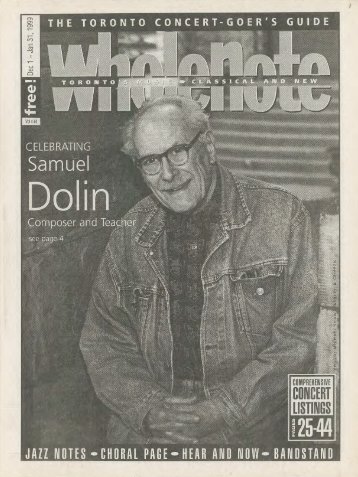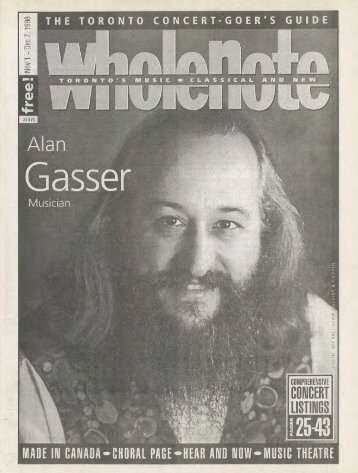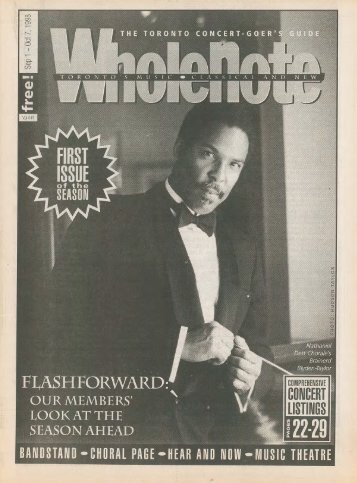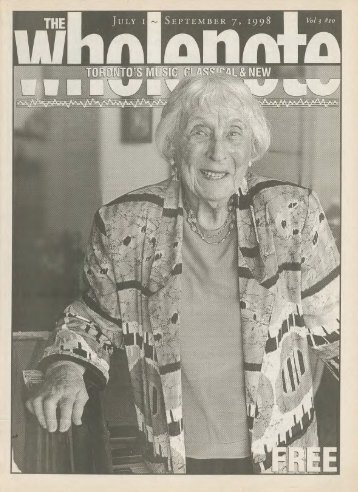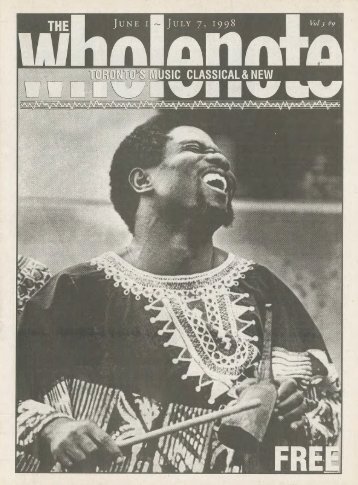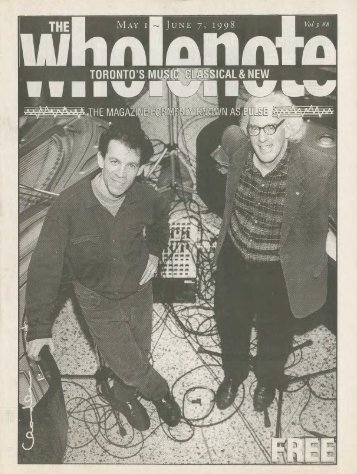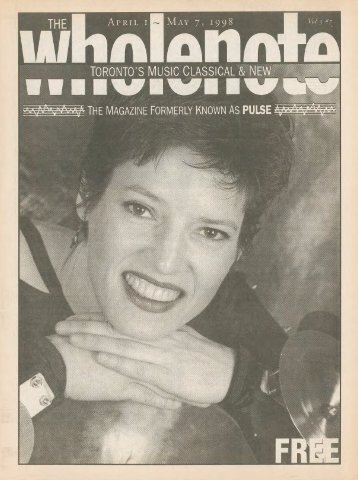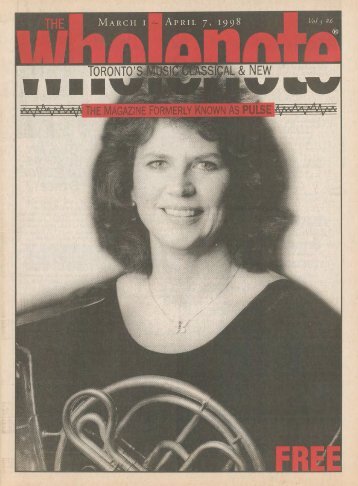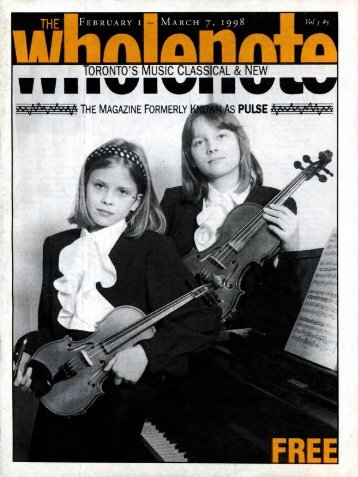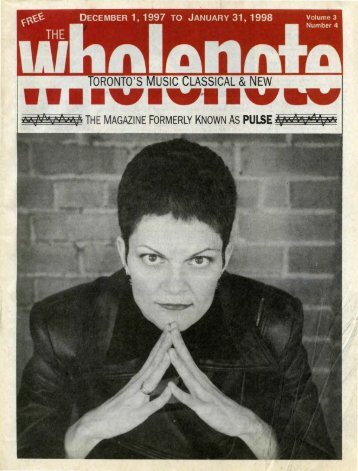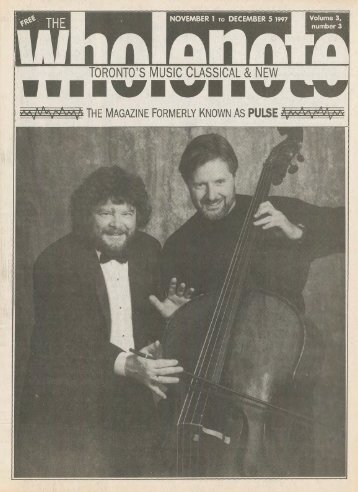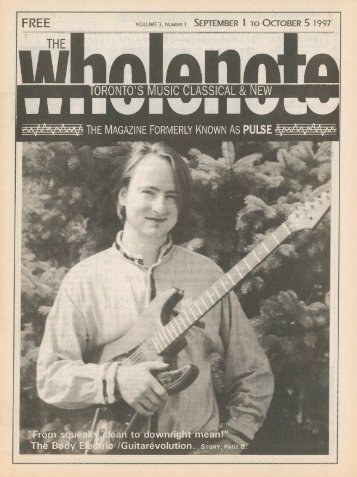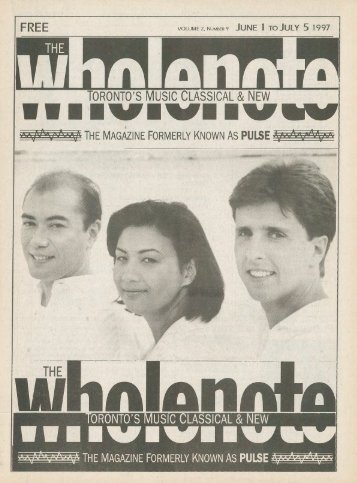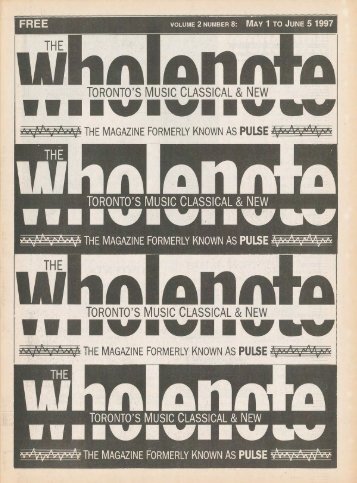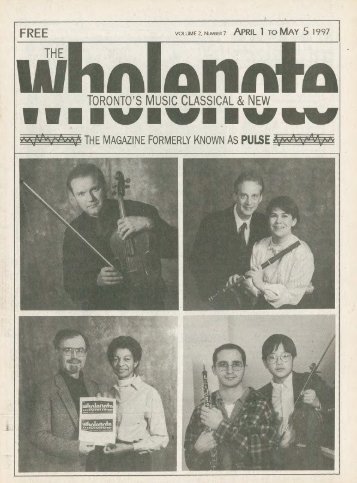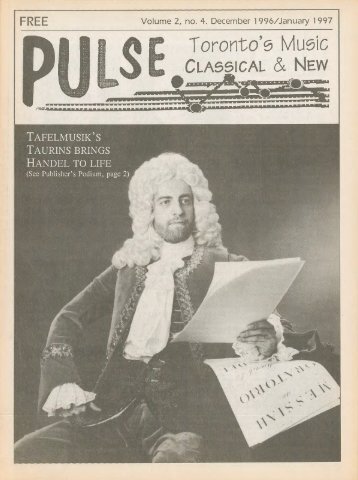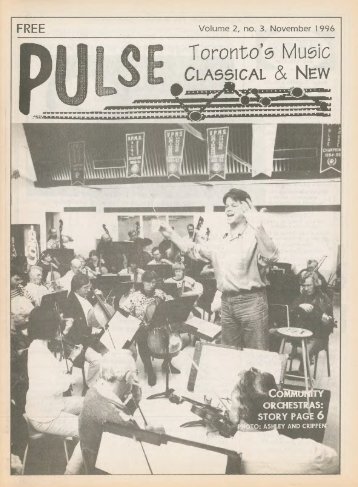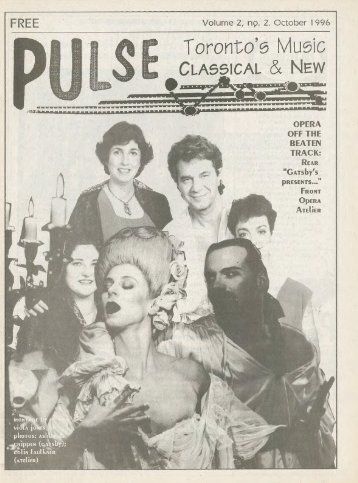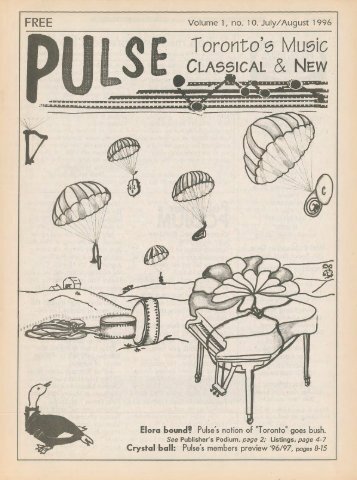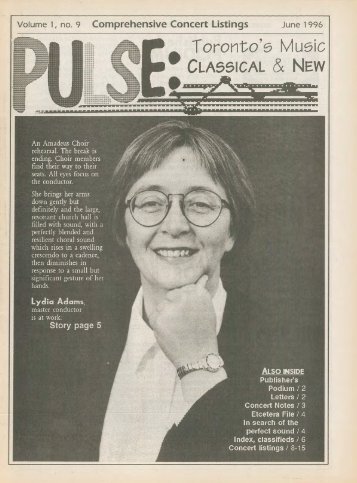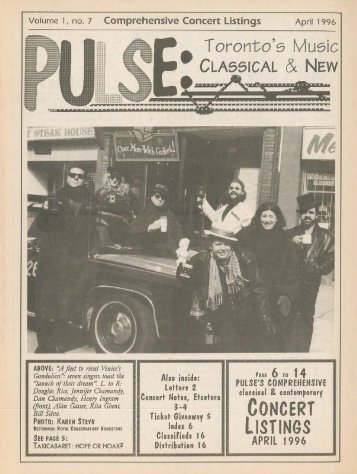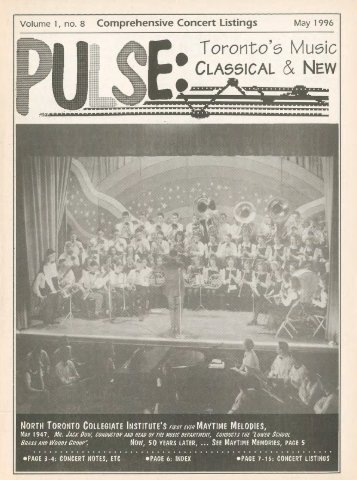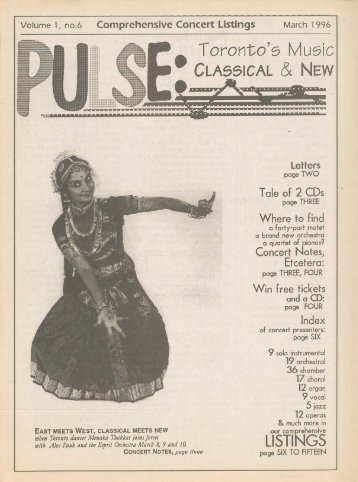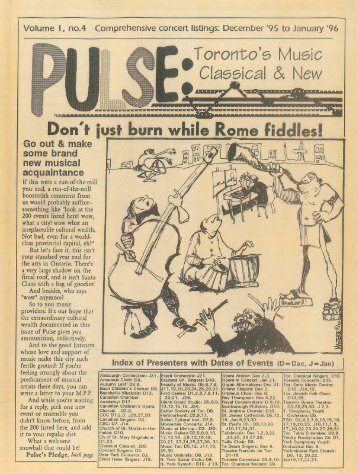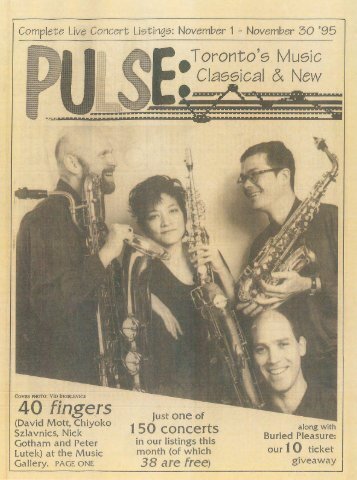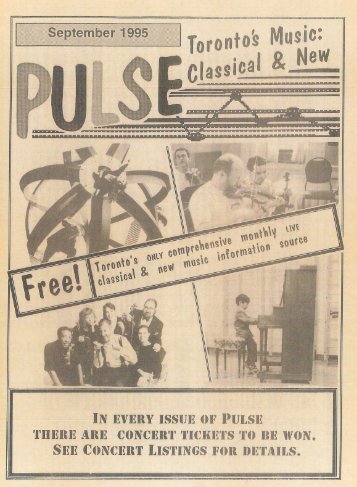Volume 18 Issue 9 - June/July/August 2013
- Text
- Festival
- August
- Jazz
- Toronto
- Concerts
- September
- Festivals
- Flute
- Arts
- Quartet
thought about the
thought about the orchestra or the dancersbecause Parker’s transcription works beautifullyas an extraordinary solo piano piece.This is definitely a welcome addition to thepiano repertoire.May 29, 2013, is the 100th anniversary ofThe Rite of Spring premiere performancein Paris, France. Today The Rite of Spring isone of the most influential works of the 20thcentury. Claude Debussy knew the work welland played it with Stravinsky in the four-handduet version. Stravinsky himself worked onthe score from the piano so it is no surprisethat it works well as a solo piano piece. JonKimura Parker discovered Stravinsky’s pianoduet version, which was used for balletrehearsals. He felt that it was “less fastidiouswith details than I had expected.” Parkerthen began to add instrumental lines that hadbeen left out. Other solo piano versions weredeemed either too minimal or unplayable. Ilike Parker’s version with the encompassinglayers of sound, from extreme delicacy andpoignant colour to raw sensuality and primitivepower. His performance is virtuosic bothtechnically and artistically. I also agree withParker’s quote about his own inspiration forthis project. “Playing The Rite of Spring at thepiano I am reminded of the day that I saw anexhibition of Picasso’s pencil sketches side byside with the finished paintings. Despite theabsence of colour the angular power of thelines had even a greater impact.” We can usethe same words about this CD which is excellentand I recommend it highly.—Christina Petrowska QuilicoIves/Brant – A Concord Symphony;Copland – Organ SymphonySan Francisco Symphony;Michael Tilson ThomasSFSMedia 821936-0038-2!!The four movementsof CharlesIves’s Concord Sonatafor piano (publishedin 1919 at Ives’sown expense alongwith his philosophicalEssays BeforeA Sonata) are titled“Emerson,” “Hawthorne,” “The Alcotts”and “Thoreau”— all leading authors of theAmerican Transcendentalist school. Ives’visionary writing is similarly “transcendent”and extremely challenging for performerand listener alike. Canadian-born composer,teacher and professional orchestrator HenryBrant had a particular affection for thisgroundbreaking work and set out to transcribeit for orchestra, a labour of love thatoccupied him off and on over the course of35 years. The resulting 50-minute work wascompleted in 1994. Brant explained his intentwas “to create a symphonic idiom whichwould ride in the orchestra with athletic surefootednessand present Ives’s music in clear,vivid and intense sonorities.” Brant’s transcriptionis masterful and highly imaginative.He freely shifts the contours of melodic linesfrom one register to another and occasionallyconstructs inner voices to enhance hisorchestral palette while remaining true tothe content of Ives’s original piano scorewhich, with its multiple staves, extremedensity and general absence of time signatures,clearly suggests a blueprint in theform of an orchestral short score. The resultcould hardly be in more capable hands thanthose of Michael Tilson Thomas and the SanFrancisco Symphony, both of whom have anoutstanding record of support for contemporaryAmerican music.The disc also includes Aaron Copland’sOrgan Symphony of 1925, a work commissionedand first performed by his mentorNadia Boulanger. It is a remarkably assuredaccomplishment by the then 24-year-oldcomposer and was the first of his works toreceive wide public acclaim. Organist PaulJacobs delivers a knockout performance ofthis intriguing and surprisingly intimatework. Superlative SACD quality soundthroughout makes this disc a must-have item.—Daniel FoleyCage – Sonatas and Interludesfor prepared pianoHenry KucharzykArtifact Music ART-041arraymusic.com!!What to say aboutJohn Cage’s Sonatasand Interludes forprepared piano?The piece has beenrecorded scores oftimes. Cage “invented”the prepared piano byinserting bolts, screws,pieces of rubber and other objects betweenthe piano’s strings at precise points along thestrings’ lengths in order to change the instrument’stimbre and tuning in unexpectedways. He described the result as a percussionensemble under the hands of a single player.Cage’s insight and ingenuity in creating theprepared piano are a legendary moment in20th century music. He had been exploringthe possibilities of the prepared piano forsome years up until the date of Sonatasand Interludes (1946–48) and continued towrite for it for some years afterward. Theprepared piano is the signature instrumentof this early-to-middle phase of the composer’scareer.What do we listen for in each new interpretationof the Sonatas and Interludes?Often, we tend to listen to the surface of thismusic — the novel sounds that result fromCage’s preparations. But Henry Kucharzyk’sperformance takes us deeper into a newworld of sound possibilities to approach themusic’s essential motives. Cage’s “subject”was the nine “permanent” emotions of theHindu tradition: the heroic, the erotic, thewondrous, the mirthful, sorrow, fear, anger,the odious and tranquility, to which theothers all tend and aspire. Cage does notspecify whether a particular sonata or interludewas intended to depict one or moreof these nine. The overall effect of this verybeautiful CD suggests that Kucharzyk wasespecially highlighting tranquility, withoutshort-changing any of the others. The eroticand the wondrous would be my next choicesas guidelines/impulses in Kucharzyk’sinterpretation, which has its mirthful andsorrowful moments, too.I don’t remember now why I wasn’t thereto hear this performance at the PremiereDance Theatre 23 years ago. It must havebeen wondrous indeed. But we have thisunique recording thanks to Artifact Music,Arraymusic, recording technicians JohnOswald and Christopher Butterfield and,most of all, to Henry Kucharzyk for his deeplyintelligent and elegantly realized rendition— emotional in just the way Cage intended.—Nic GothamRota – Clarinet Sonata; Clarinet TrioGoran Gojevic; Mary Kenedi; Lynn Kuo;Winona Zelenka; Michael SweeneyNaxos 8.572778! ! The name NinoRota may not be allthat familiar, butif you’ve ever seenThe Godfather orheard the famouslove theme from the1968 film Romeo andJuliet, you’ve heardhis music.Born in Milan, Rota studied compositionwith Pizzetti and later at the Curtis Institutein Philadelphia. Although he is chiefly knowntoday for his film scores, his output alsoincludes a large number of chamber andorchestral works, all of it written in a contemporarybut thoroughly accessible style. Andwhat better way to sample some of his noncommercialoutput than through this fineNaxos recording with music performed bysome of Toronto’s top musicians? Amongthe pieces presented here are the ClarinetSonata, the Clarinet Trio, Improvviso,Toccata for Bassoon and Piano and theFantasia for Piano, admirably performed byGoran Gojevic, clarinet, Mary Kenedi, piano,Lynn Kuo, violin, Winona Zelenka, cello, andMichael Sweeney, bassoon.This is a charming disc, its appeal not onlyin the high level of performance, but in theinherent contrasts found within the music.The Trio for Clarinet, Cello and Piano from1973 is pure cheekiness, with two playfulouter movements surrounding a languorousandante. In contrast, the lyrical ClarinetSonata, written 18 years earlier, clearly looksback to the 19th century with its expansivemelodies and mood of introspection. Gojevic’swarm tone and Kenedi’s solid command ofthe score result in a fine performance. Equallyromantic is the Fantasia for Piano, also from1945. A recent discovery, this piece seems88 | June 7 – September 7, 2013 thewholenote.com
to draw from numerous sources, but few ofthem from the 20th century — do I detecta snippet of Schubert at times? A touch ofFrench impressionism?This collection is a most welcome additionto the catalogue, and ample proof thatthere is much more to Nino Rota than whatwe’ve heard on the big screen during the last45 years. Bravo to all performers involved forsome fine music making.—Richard HaskellElżbieta Sikora – Solo and ElectronicsVarious ArtistsDUX 0679adux.pl!!The soundworldsof the four workscomposed by Polishborn Elżbieta Sikoraemerge in this albumout of the inspirationgenerated by thepoetry of ZbigniewHerbert. Through theskilful interweaving of instrumental and electroacoustictimbres, each piece is an evocativesonic image stimulated by Herbert’s words:a striding Orpheus-Apollo; a hesitant Nikebeckoning; a waking dream shimmering; acollection of stones distilling midair.Although celebrated in Europe, Sikora isrelatively unknown in this country, but if youlove listening to new sounds and are intriguedand curious about the electroacoustic genre,this CD offers music of breathtaking imaginationand compelling sonic textures. Eachpiece presents an interaction between asolo instrument — flute, cello, harpsichord,piano — and electronic sources generatedwithin a studio environment.This interaction takes varying forms: questionand answer, expression of opposite polarities,or one sonic plane enhanced by theother. And within each of the pieces, she hascarefully crafted various approaches to creatinga sense of open flexibility within the realmof a fixed time frame — always a compositionalchallenge with electroacoustic worksfor live players and pre-recorded electronics.Even though the pieces were created over aperiod of 25 years, at no time do you feel as ifthe older technologies used are a limitation.In fact, quite the opposite. Each piece offers awindow into a rich and diverse sonic language,and is full of dramatic vigour and intensity.Definitely a composer worth discovering.—Wendalyn Bartleyalbum in five years,Night is a return tocollaboration withthe bandmates ofthe last two decadesthat helped establishher as the fine songinterpreter she is. Sopianist and arranger,Aaron Davis, David Piltch on bass, sax andreed player John Johnson and drummerDavide Direnzo are the core players andprovide clever nuanced support throughout.The theme of the album isn’t obviously representedby the song titles as not an “evening”or “night” song is to be found. But there’s awee-small-hours-of-the-morning feel thatpermeates throughout.The opening tune sets the tone as thegroup eases through a languid You Only LiveTwice with dreamy pedal steel courtesy ofGreg Leisz. Then we’re led through a range ofstories courtesy of some well-known songwriterslike Tom Waits (the swampy WalkAway) and others a little more obscure butno less poignant, like Danny O’Keefe (GoodTime Charlie’s Got the Blues). Even when theenergy gets kicked up, as it does on Viva LasVegas — complete with 60s style horns anda smokin’ flute solo from John Johnson —there’s an appealing coolness that pervades.Cole and her band’s tune-picking abilities andpowers of interpretation are in abundance onNight and fans will not be disappointed.—Cathy RichesMasterclass: Holly Cole will be joining theclinicians at the Jazz On The Mountain atBlue festival July 5 to present her own classon “the art of the voice and the bass.”bluemountainjazzfest.comOffsetKyle Brenders Quartet18th Note Records 18-2012-2kylebrenders.ca!!Proficient in both improvised and notatedmusic, clarinettist/saxophonist Kyle Brendershas become a known commodity on thelocal music scene and this bang-up disc aptlydemonstrates his elevated compositionaland playing standards.Workingthrough a programof eight somewhatbouncy always quirkyBrenders’ originalshe’s helped immeasurablyby the cohesive,multi-faceted soloingof trombonist Steve Ward, Tomas Bouda’sunobtrusive yet sturdy bass line and the everinventivedrumming of Mark Segger.Working with motifs which referencebrassy marching band music while utilizingextended instrumental techniques,the result is sophisticated without everbecoming esoteric. Segger and Ward are keysto this strategy. On a tune such as Porlockfor instance, the trombonist constructsa jolting solo out of mid-range plungerimpulses and smooth capillary extensions asBrenders’ soprano saxophone exposes quiveringmultiphonics. Meanwhile the themeis repeated at intervals with tremolo fluttersfrom both, centred by the bassist. With Whiskit’s blustering puffs and slurs from the ‘boneman that hold the line as the composer onbass clarinet cascades split tones a cappellafrom subterranean to altissimo and is thenjoined by the drummer’s ruffs and reboundsfor a stop-time ending. Terrace, on the otherhand, is Segger’s showcase, as metallic clinks,castanet-like snaps and wood-block smacksmove upfront. At the same time his pops andpitter-patters underline the theme, whichcorrespondingly vibrates by parallel clarinetand trombone lines.Far along in his synthesis of other influences,which include composer AnthonyBraxton’s eclecticism, the sax-and-trombonecentredNew York Art Quartet and a craftysubversion of Cool Jazz’s thin and subtleharmonies with raucous trombone blats andcontrapuntal saxophone glossolalia, Brendersis a noteworthy Toronto talent, with this CD adefinitive showcase of his varied skills.—Ken WaxmanConcert Note: On June 22 the KyleBrenders Quartet is in concert at the MusicGallery along with New York saxophonistMatana Roberts.JAZZ & IMPROVISEDNightHolly ColeRumpus Room Records 3716101hollycole.com!!Singer Holly Cole continues her stylishways with her latest release. Her first studioMontreal pianist OliverJones announced his retirementat age 65 back in2000, but returned to performingshortly thereafter. Since then he’smade a further contribution tothe swing quotient of Canadianjazz, for Jones has a devotionStuart Broomerto rhythmic propulsion secondonly to Oscar Peterson. A certainresemblance may be inevitable:Jones grew up in the sameLittle Burgundy neighbourhood ofMontreal where he studied pianowith OP’s sister, Daisy PetersonSweeney. Josée Aidans appears asthewholenote.com June 7 – September 7, 2013 | 89
- Page 1 and 2:
FREE!Vol 18 No 9CONCERT LISTINGS |
- Page 4 and 5:
13/14Mastersof MusicOrchestrate a s
- Page 6:
The Drive’s Alive!Thanks to all o
- Page 9 and 10:
Institute and performances of Hande
- Page 11 and 12:
tafelmusik: sian richardsPallade Mu
- Page 13 and 14:
Joe Macerollo.Starting off in June,
- Page 15 and 16:
Beat by Beat | World ViewA Slow Hot
- Page 17 and 18:
Beat by Beat | Classical & BeyondSt
- Page 19 and 20:
116 13T H SEASON14MUSIC IN THEAFT E
- Page 21 and 22:
Musicat MetropolitanMusic at Metrop
- Page 23 and 24:
in harmony with the aesthetic of th
- Page 25 and 26:
Beat by Beat | Art of SongThe Songs
- Page 27 and 28:
For operas in concert in June, one
- Page 29 and 30:
acheal mccaigdirector of the Shaw F
- Page 31 and 32:
jack macquarrieLeading Seaman James
- Page 33 and 34:
is that the best jazz I’ve heard
- Page 35 and 36:
A toast to jams: Between the Festiv
- Page 37 and 38: 416-593-0688(Chinese). -0. Al
- Page 39 and 40: ●●7:30: Domoney Artists Managem
- Page 41 and 42: Lula Lounge June 19, 8pmTD Toronto
- Page 43 and 44: College, 540 Lakeshore Rd. W., Oakv
- Page 45 and 46: Smokin’ Cigar, 1946 Queen St. E.
- Page 47 and 48: and Morphy. TorQ. Toronto Music Gar
- Page 49 and 50: Monday July 8See SUMMER FESTIVALS f
- Page 51 and 52: IN THE CLUBS continued from page 35
- Page 53 and 54: 26 6:30pm Stephen Gardner (keys); B
- Page 55 and 56: of music. Melanie Conly, soprano; B
- Page 57 and 58: info@silencesounds.ca.●●Sep 7,
- Page 59 and 60: Price includes food, drinks and mai
- Page 61 and 62: ON THE ROAD | continued from page 9
- Page 63 and 64: ing you to your feet in standing ov
- Page 65 and 66: Parker, Lionel Loueke, Dave Douglas
- Page 67 and 68: Jan Lisiecki, Tafelmusik Baroque Or
- Page 69 and 70: Elora FestivalJuly 12 to August 4El
- Page 71 and 72: Winds; Mark Fewer, Yehonatan Berick
- Page 73 and 74: Markham Jazz FestivalAugust 15 to A
- Page 75 and 76: classical music experience. DC. Fre
- Page 77 and 78: ●●August 8, 11:15am: Jan Lisiec
- Page 79 and 80: Westben - Concerts at The BarnJune
- Page 81 and 82: !!Mariposa Folk FestivalJuly 5 to J
- Page 83 and 84: We welcome your feedback and invite
- Page 85 and 86: Chopin - ÉtudesJan LisieckiDeutsch
- Page 87: Exactly the same can be said for th
- Page 91 and 92: on June 15. Nilssen-Love, whoseasso
- Page 95 and 96: TSTorontoSymphonyOrchestraPeter Oun
Inappropriate
Loading...
Mail this publication
Loading...
Embed
Loading...

